AMD Ryzen 5 7600X
AMD Ryzen 5 7600X: Two minute review
Zen 4 has finally arrived, and we’re seriously (read: not at all seriously) considering rebranding to RyzenRadar. AMD isn’t messing around this time; Intel’s nifty Alder Lake core architecture put Team Blue in front in the current generation, and with 13th-gen Raptor Lake chips on the way, AMD clearly knew it had to swing for the fences.
And what a swing it was! The flagship Ryzen 9 7950X is unsurprisingly an absolute beast of a CPU, inarguably muscling its way to the top of the best processor rankings with stunning performance that blows Intel’s Core i9-12900K out of the water. But what about the more affordable Ryzen 7000 chips - you know, the ones people will actually want to buy?
The Ryzen 5 7600X is the cheapest option in the current lineup of Zen 4 processors, weighing in at $299 for a 6-core, 12-thread CPU with a boost frequency of 5.3GHz. It’s not the same on-paper dynamite as the 7950X, but it’s a competitive entry that becomes even more impressive once you see the performance figures.
Intel enjoyed a serious generational performance leap from its 11th to 12th gens, with the shift to big.LITTLE core design that saw a split between ‘performance’ and ‘efficiency’ cores to boost performance in multi-core workloads. Now, AMD is giving us a similar generational upgrade, but without efficiency cores; the result is a chip that dominates in single-core workloads, and still performs reasonably well when firing on all cores.
The new 5nm manufacturing process used by TSMC to produce the Ryzen 7000 chips is clearly excellent - and that’s even bearing in mind that Ryzen 5000 was an extremely solid generation of CPUs. It’s worth noting, though, that Zen 4 comes with a whole new socket, meaning AMD is finally leaving the trusty AM4 socket behind and mandating upgrades to new AM5 motherboards.
The only other fly in the ointment is the lack of AMD’s flashy 3D V-cache technology in these new Ryzen 7000 chips. First introduced in the Ryzen 7 5800X3D, this clever bit of processor design allows AMD to ‘stack’ cache memory on the CPU die, effectively tripling the amount of available cache to boost performance (especially in games). Does the Ryzen 5 7600X suffer from its absence? Let’s take a look.
AMD Ryzen 5 7600X: Price & availability

- How much does it cost? MSRP $299 (about £265 / AU$460)
- When is it available? September 27, 2022
- Where can you get it? Available in the US and UK (Australian release pending)
At $299 (about £265 / AU$460 at the time of writing), the Ryzen 5 7600X doesn’t represent a generational price increase when compared to the ever-dependable Ryzen 5 5600X. It’s perhaps a bit depressing that this has become a selling point, but considering the step up in performance against the 5600X, it’s definitely still a good thing.
A seriously effective gaming CPU for three hundred bucks is great - though it should be noted that you can now snap up that last-gen chip for under $200. Still, it looks like AMD are going to have Intel up against the wall at the lower end of the CPU market with this aggressive pricing.
The problem with the 7600X’s excellent price-to-performance ratio is that it doesn’t take into account the cost of upgrading the rest of your system to be compatible with it. These new processors require a Zen 4-supporting motherboard, with the new AM5 socket, and to make matters worse, AM5 boards only support DDR5 memory, so you’ll be out of pocket for some new RAM too.
This isn’t entirely AMD’s fault; Team Red had to move on from the AM4 platform eventually, and it wasn’t AMD’s decision to make DDR5 slots physically incompatible with DDR4 memory. AM5 is a whole new product category, though, with even the cheapest X670 AM5 motherboard we could find costing $260 for a decidedly basic package.
DDR5 memory is also more expensive than DDR4; 16GB of the latter can cost you less than $50, while the very cheapest 16GB DDR5 kit we could track down was $72. It shouldn’t be a dealbreaker, but it’s an important factor to consider if you’re looking for a new CPU. It’s worth bearing in mind that these costs will come down over time, too.
- Value: 4 / 5
AMD Ryzen 5 7600X: Chipset & features
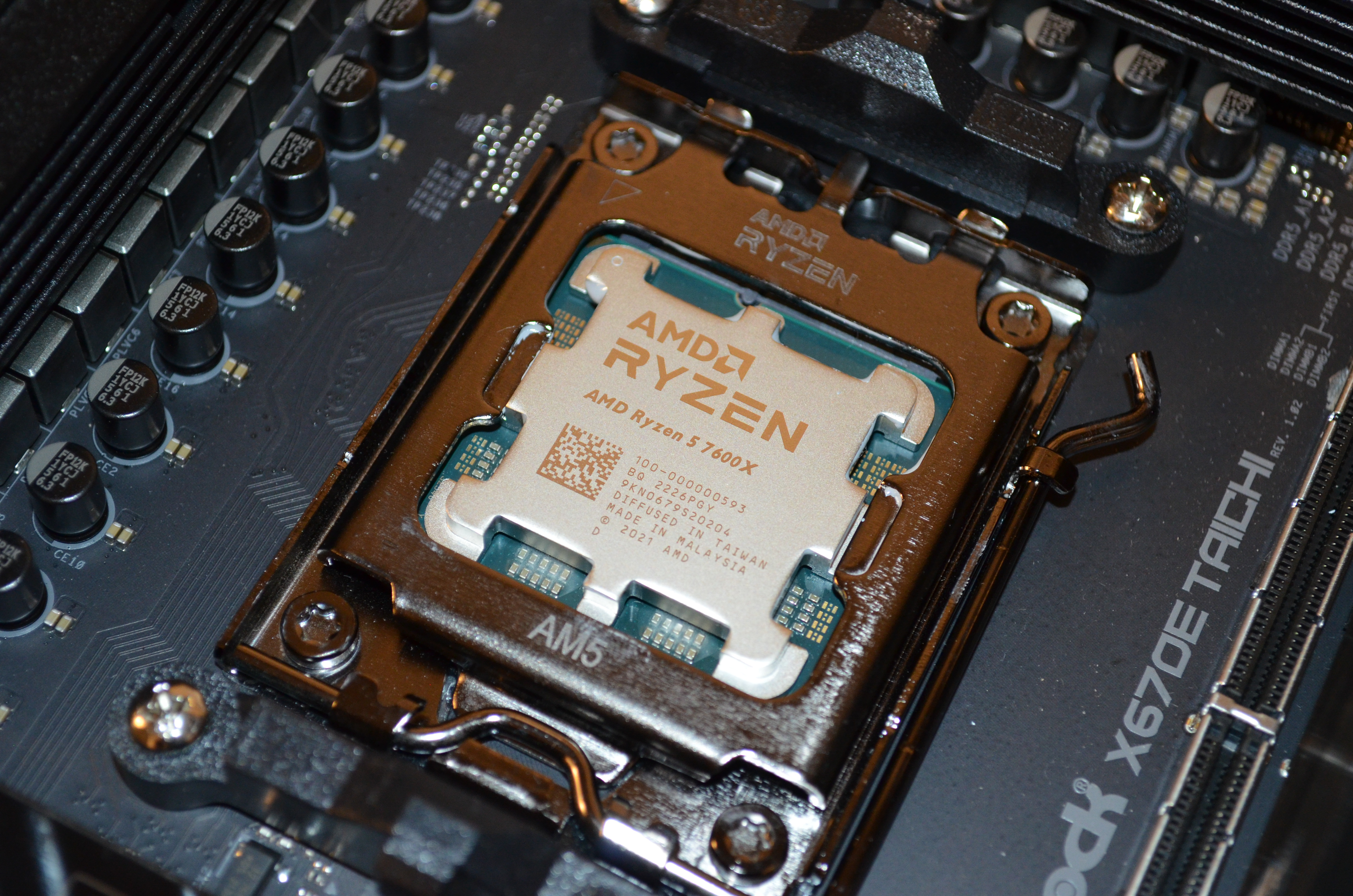
- Powerful new individual cores
- PCIe 5.0 and DDR5 support
- RDNA 2 GPU is a nice inclusion
Process: 5nm
Socket: AM5
Cores: 6
Threads: 12
Base frequency: 4.7GHz
Boost frequency: 5.3GHz
L3 cache: 32MB
TDP: 105W
PCIe: 5.0 x 24
Max RAM: 128GB Dual-Channel DDR5
Unlocked: Yes
Integrated Graphics: 2-core RDNA 2 GPU
With 6 cores, 12 threads, and a boost frequency of 5.3GHz, the Ryzen 5 7600X isn’t messing around, with a step up of 0.6GHz at boost from the Ryzen 5 5600X. The shift to AM5 might be a downside for some potential buyers, but it also comes with the upgrade to PCIe 5.0 and DDR5 (even if the latter is a mandatory change).
Naturally, those new compatibilities mean better performance - and while Intel users have had access to them in 12th-gen Alder Lake chips since late 2021, the market hasn’t really reflected that; PCIe 5.0 SSDs aren’t even properly available to consumers yet, and Intel’s decision to keep Alder Lake backwards-compatible with DDR4 has evidently led many buyers to stick with their existing memory.
Progress is important, though, and the Ryzen 5 7600X’s doubled bandwidth with PCIe 5.0 support will also mean a step up in discrete graphical performance on the new AM5 motherboards. We’re all going to have to upgrade to DDR5 eventually, too.
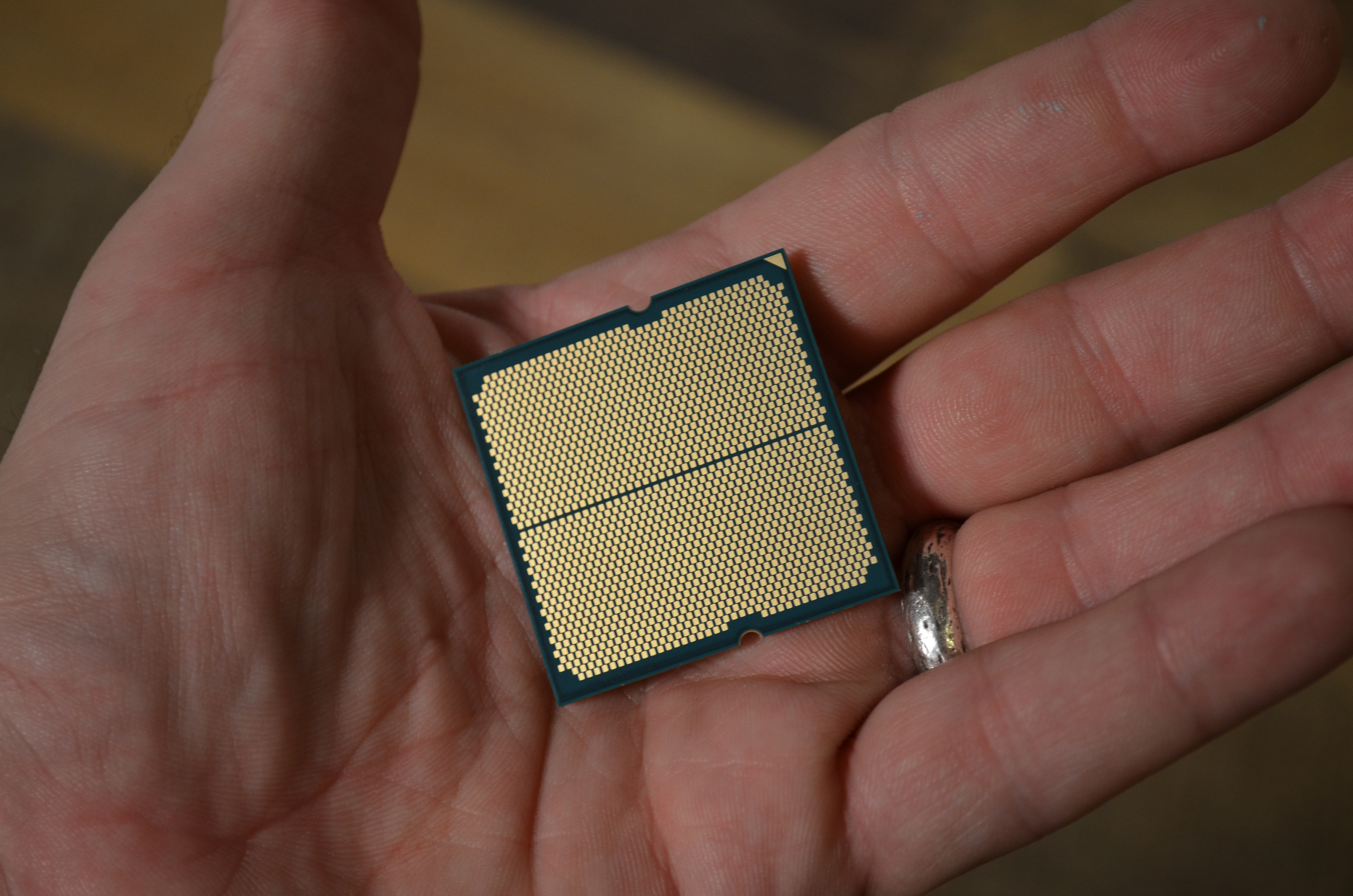
The 7600X also comes with integrated graphics, running a dual-core RDNA 2 GPU - this isn’t going to scare any dedicated graphics card, but it’s a worthy inclusion considering the applications in GPU-less systems like lightweight laptops and office PCs. There’s AV1 and HEVC decode, and support for DisplayPort 2.0, HDMI 2.1, and USB Type-C video output, which all serve to keep this chip competitive with Intel’s upcoming offerings.
Another inclusion clearly designed to keep pace with Intel is support for Intel's AVX-512 instruction set. In layman’s terms, this instruction set was originally created by Intel to accelerate performance in high-level computational tasks such as 3D modeling, financial analysis, and deep learning. It basically lets your CPU perform intensive number-crunching tasks faster, which is an obvious plus.
One thing the 7600X doesn’t come with is a dedicated cooling solution, possibly marking the death of AMD’s excellent Wraith line of stock air coolers. We loved the packaged Wraith coolers, since they made Ryzen chips ready-to-go straight out of the box. The upside here is that AM4-compatible coolers will still work on AM5 motherboards, so you won’t need a new cooling solution. We suspect that the lack of a stock cooler is related to Ryzen 7000’s heavier power draw (and therefore heat production) compared to Ryzen 5000, but more on that later.
- Features: 5 / 5
AMD Ryzen 5 7600X: Performance
- 27% performance increase on average against the 5600X
- Single-core performance wrecks 12th-gen Intel chips
- Power-hungry under load, but strong performance per watt
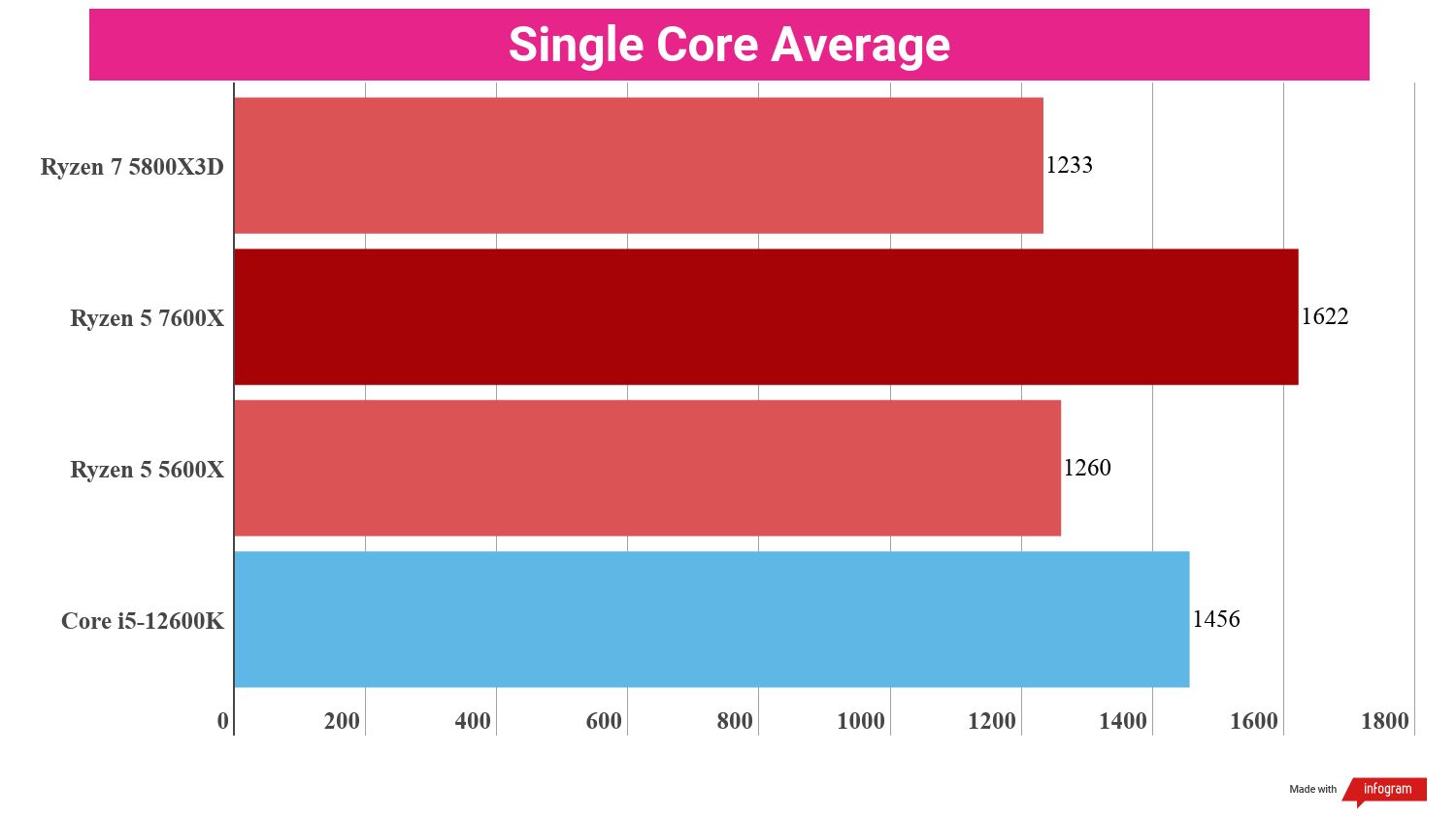
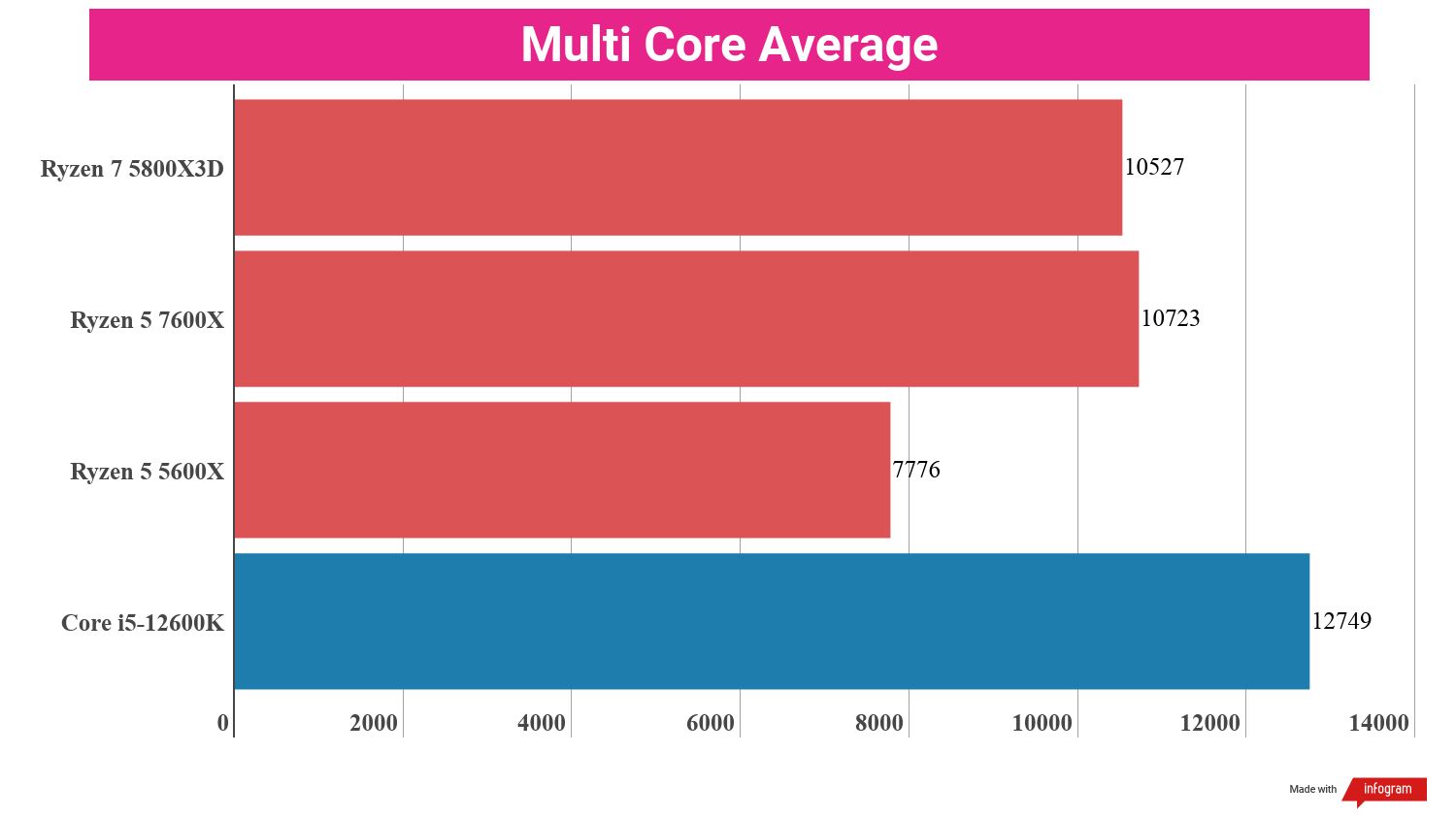
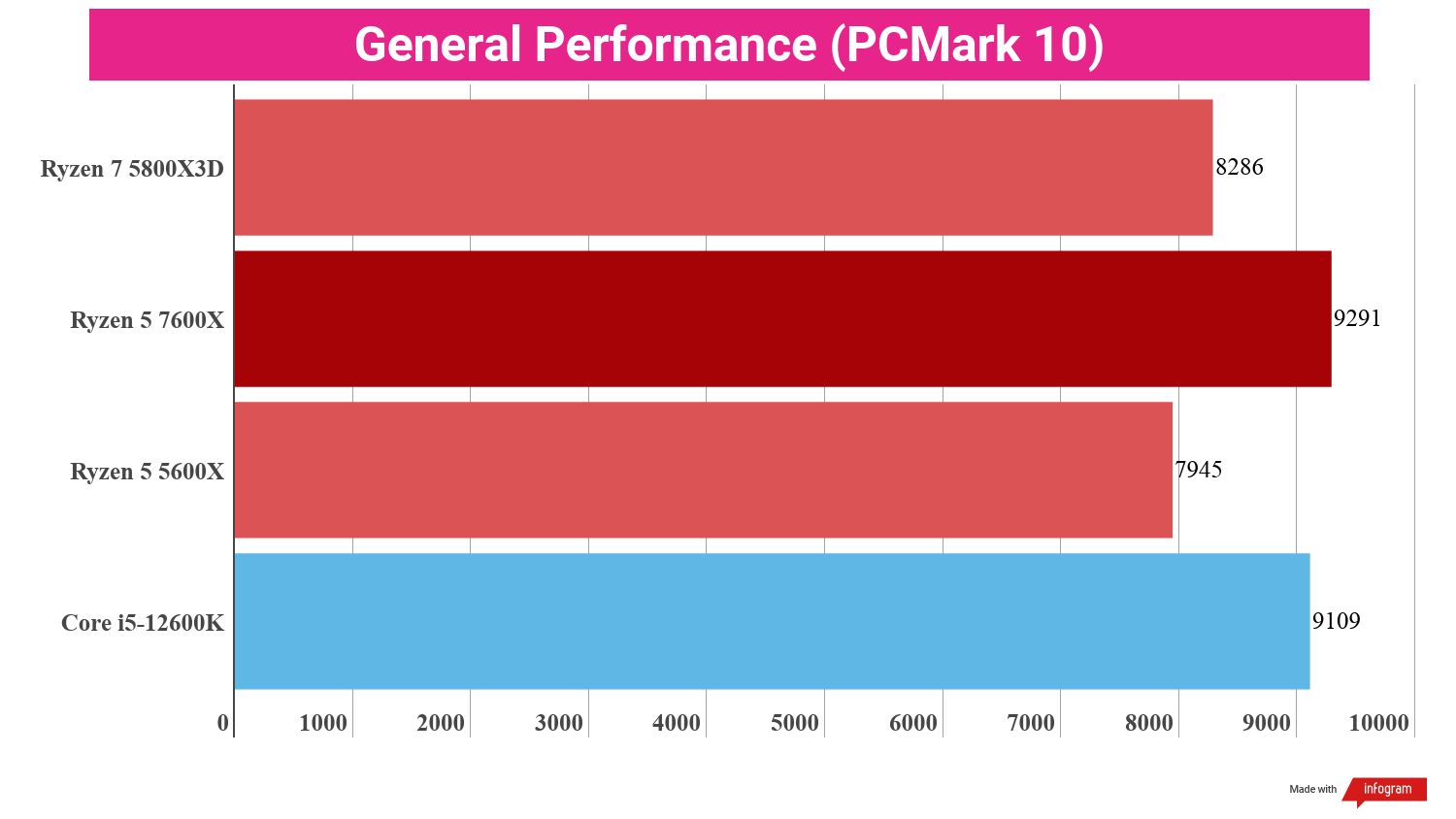
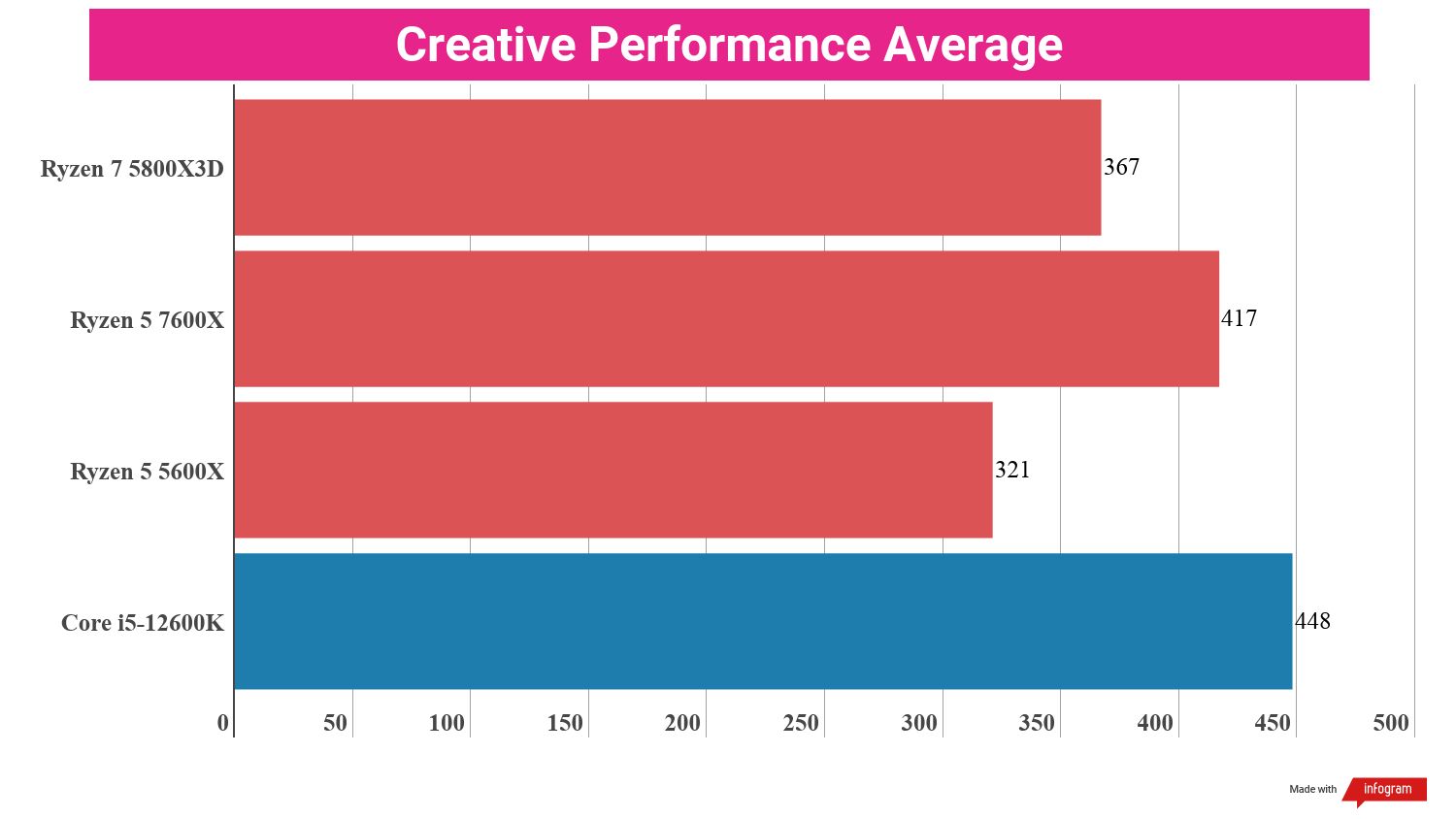
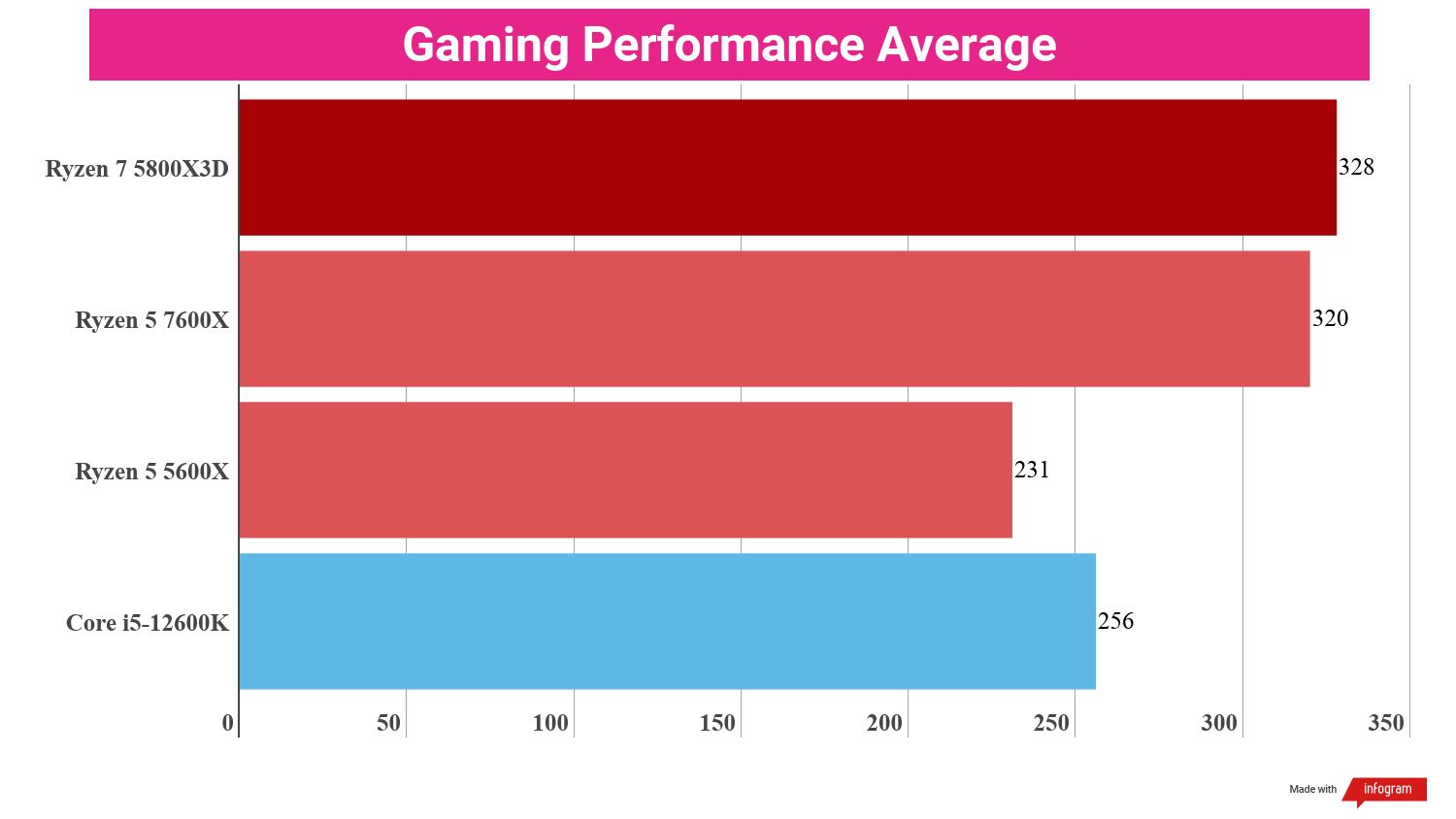
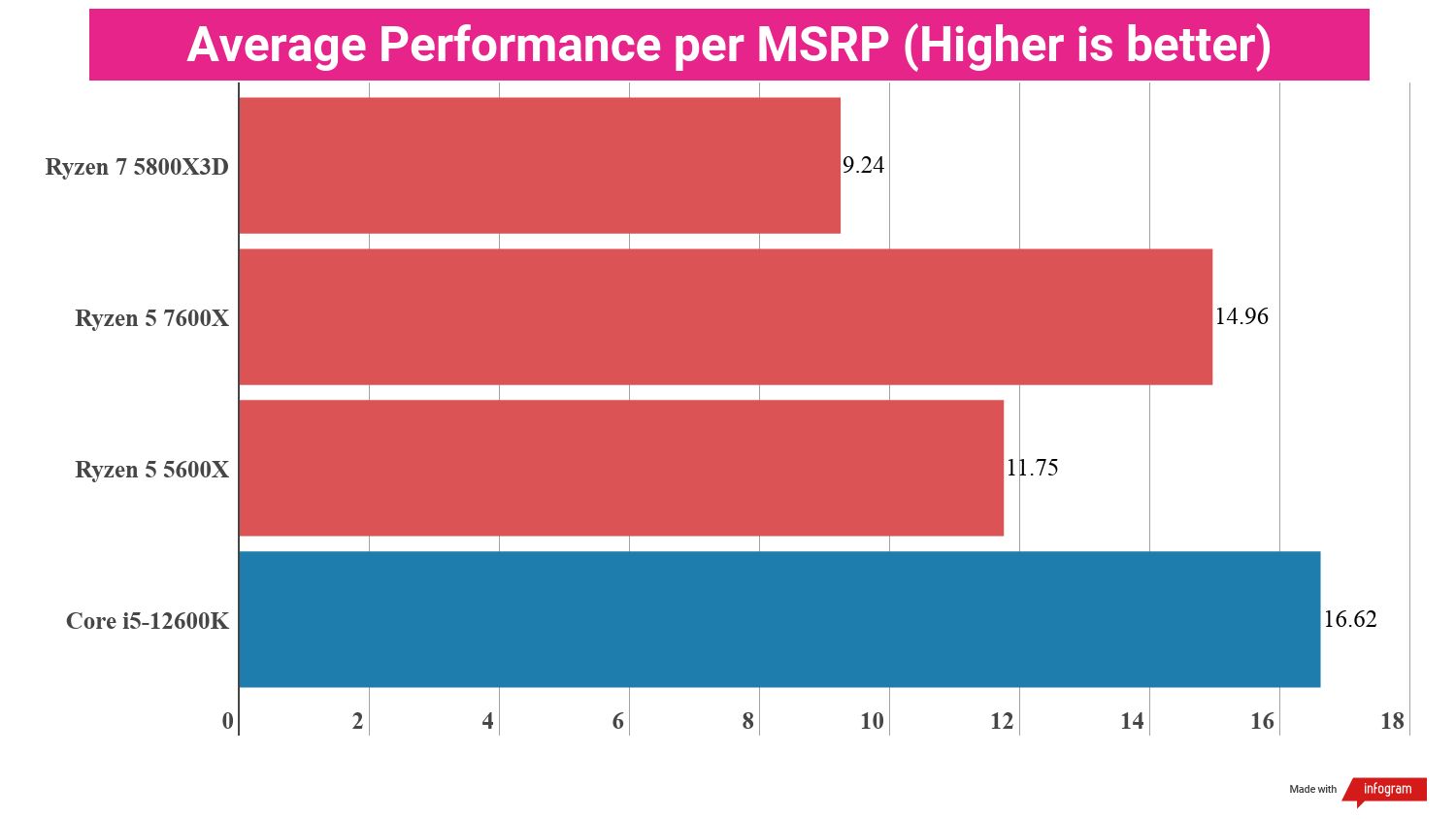
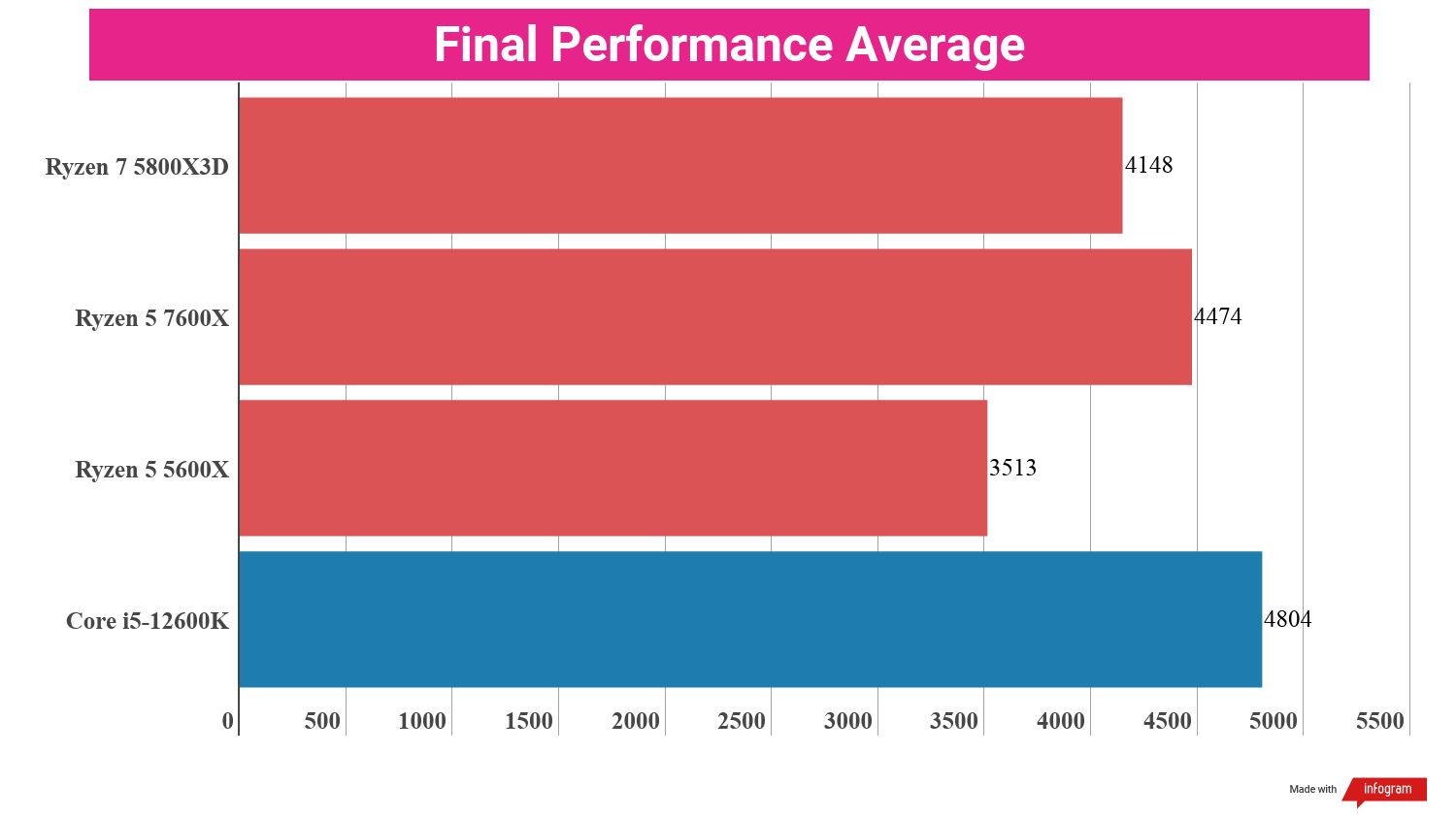
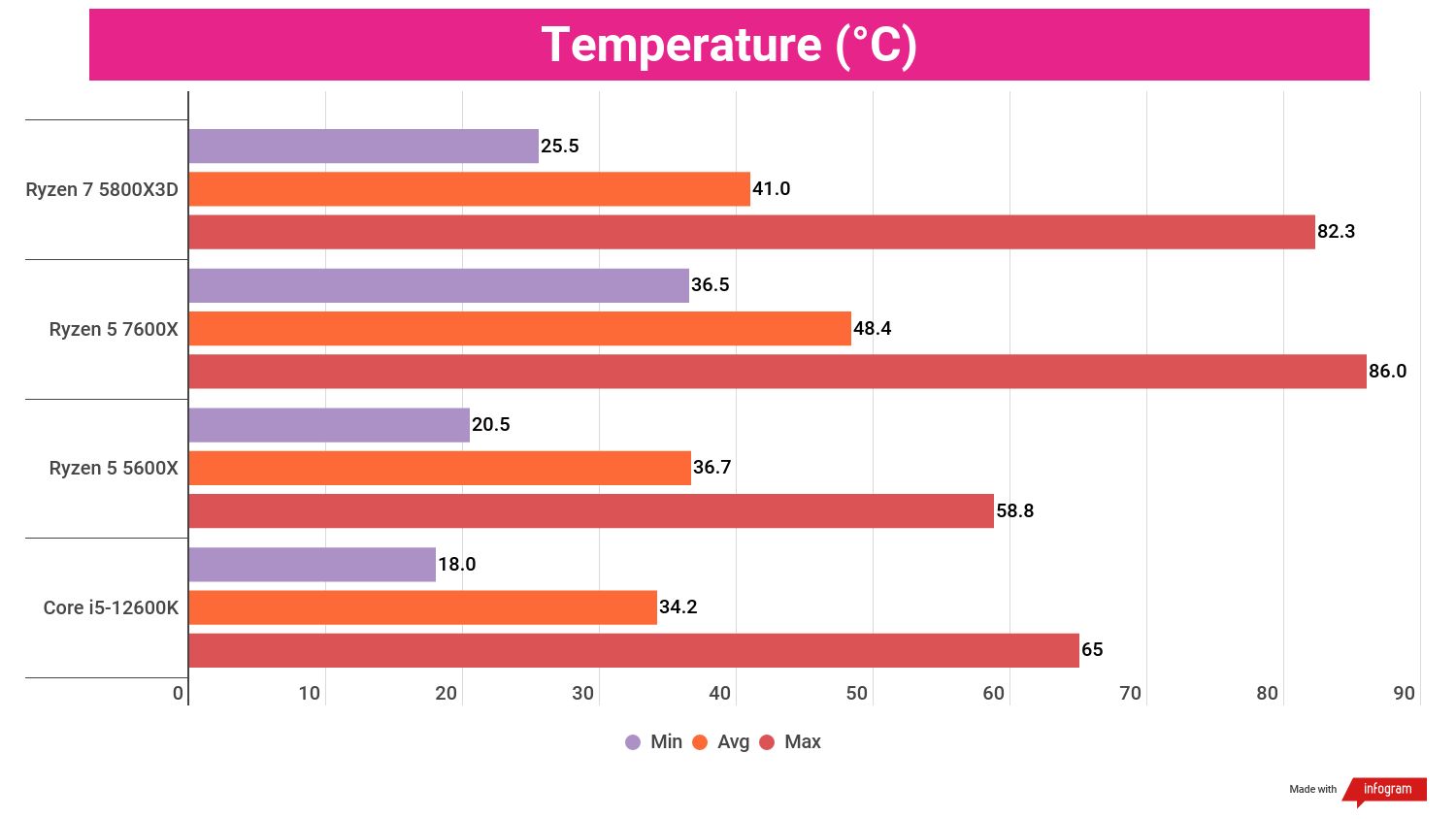
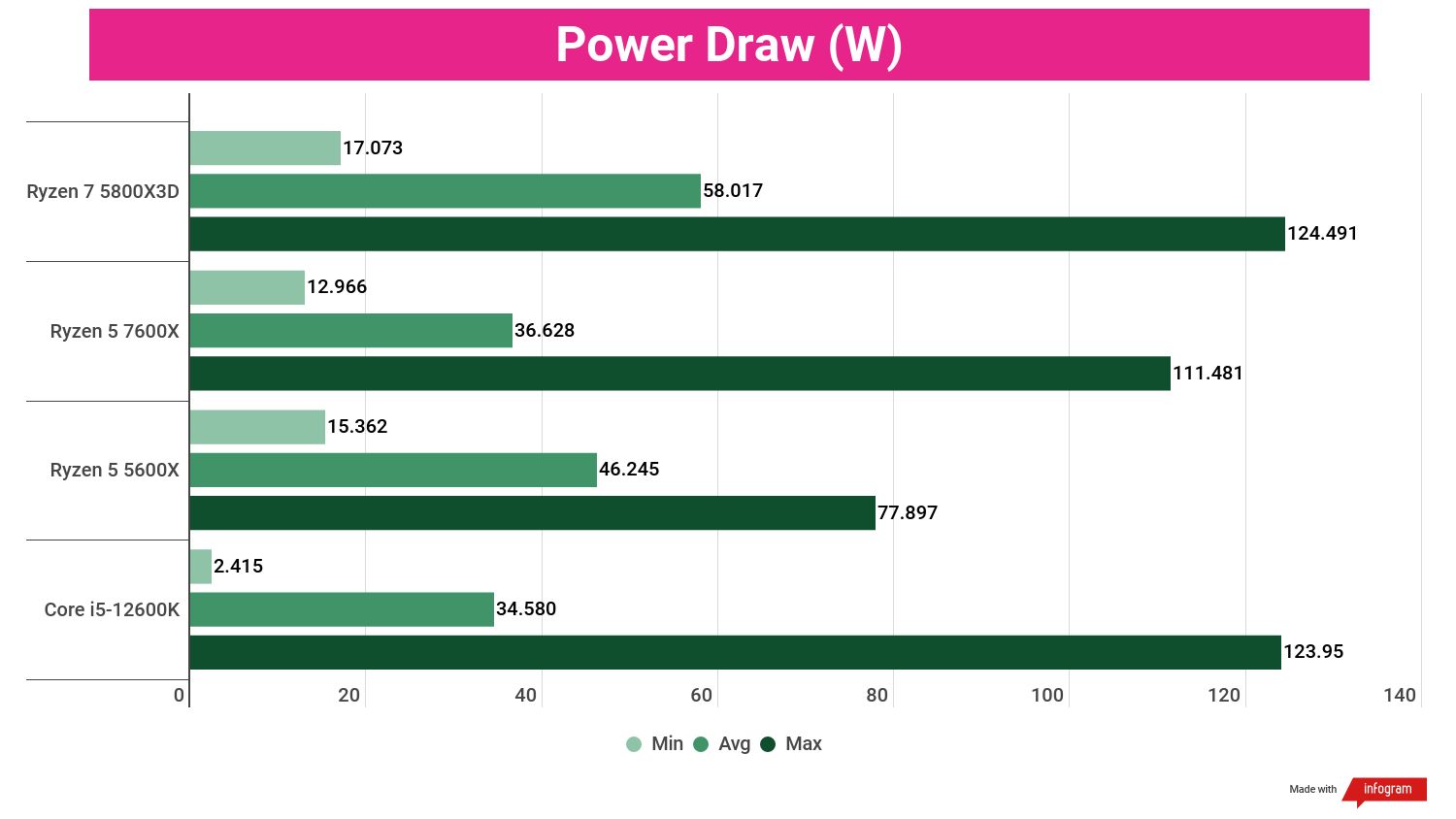
Yes, the Ryzen 5 7600X uses noticeably more power compared to its predecessor, the 5600X. It should be noted that this only really applies when the chip is running at full power, though; in our benchmarking process, it maxed out at 111W compared to the 5600X’s 78W, but actually averaged 10W lower across all our tests.
The average power draw is fairly close to the Intel Core i5-12600K, which means that AMD probably has Intel beat in the wattage department since the i5-13600K is almost certain to require more power. The 7600X does, however, run a lot hotter than both the 5600X and the 12600K, hitting temperatures of 86C in our tests. That’s likely why a stock Wraith cooler isn’t included, but it’s not an absurd temperature and the chip is rated to run as hot as 95C anyway.
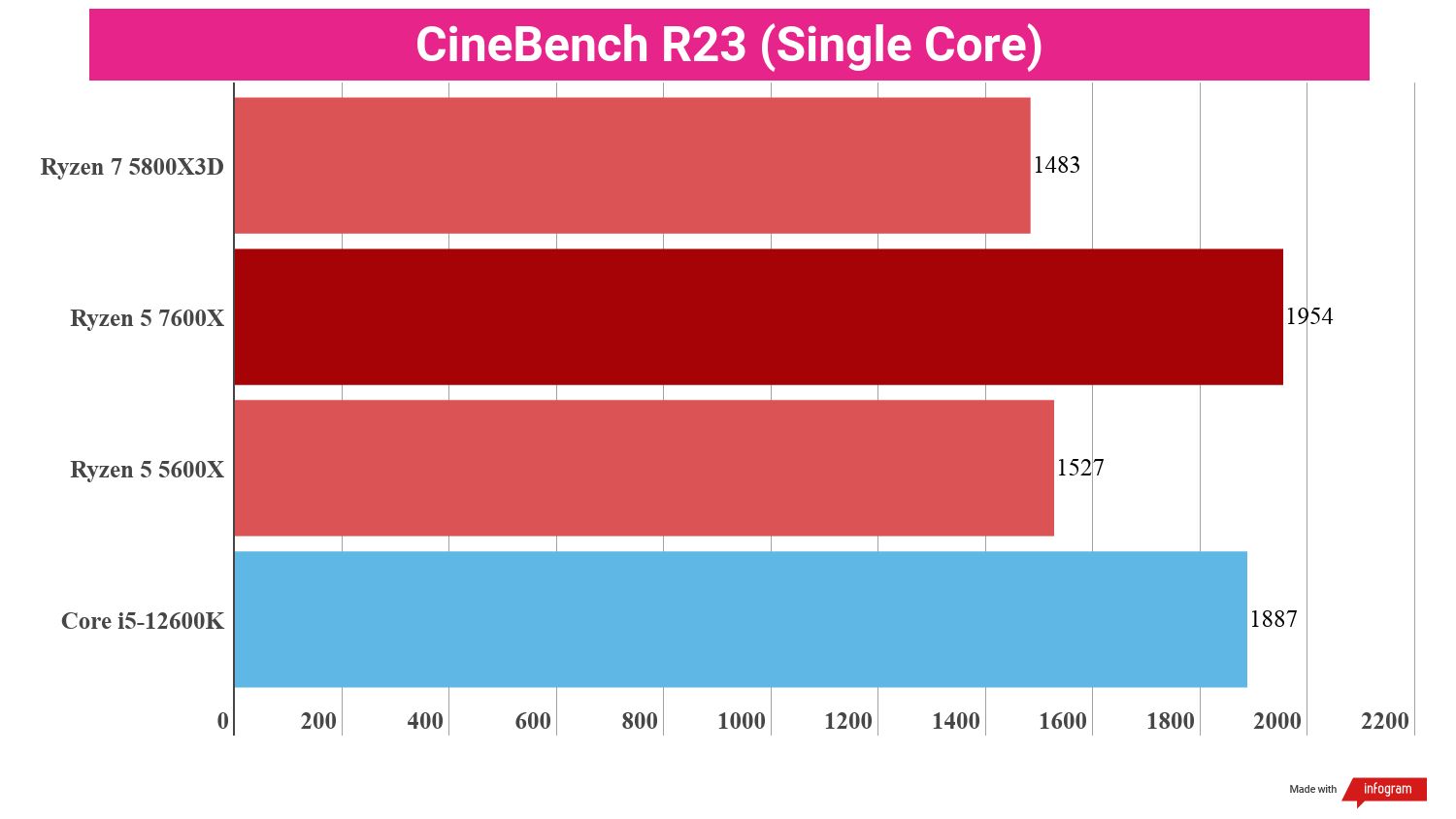
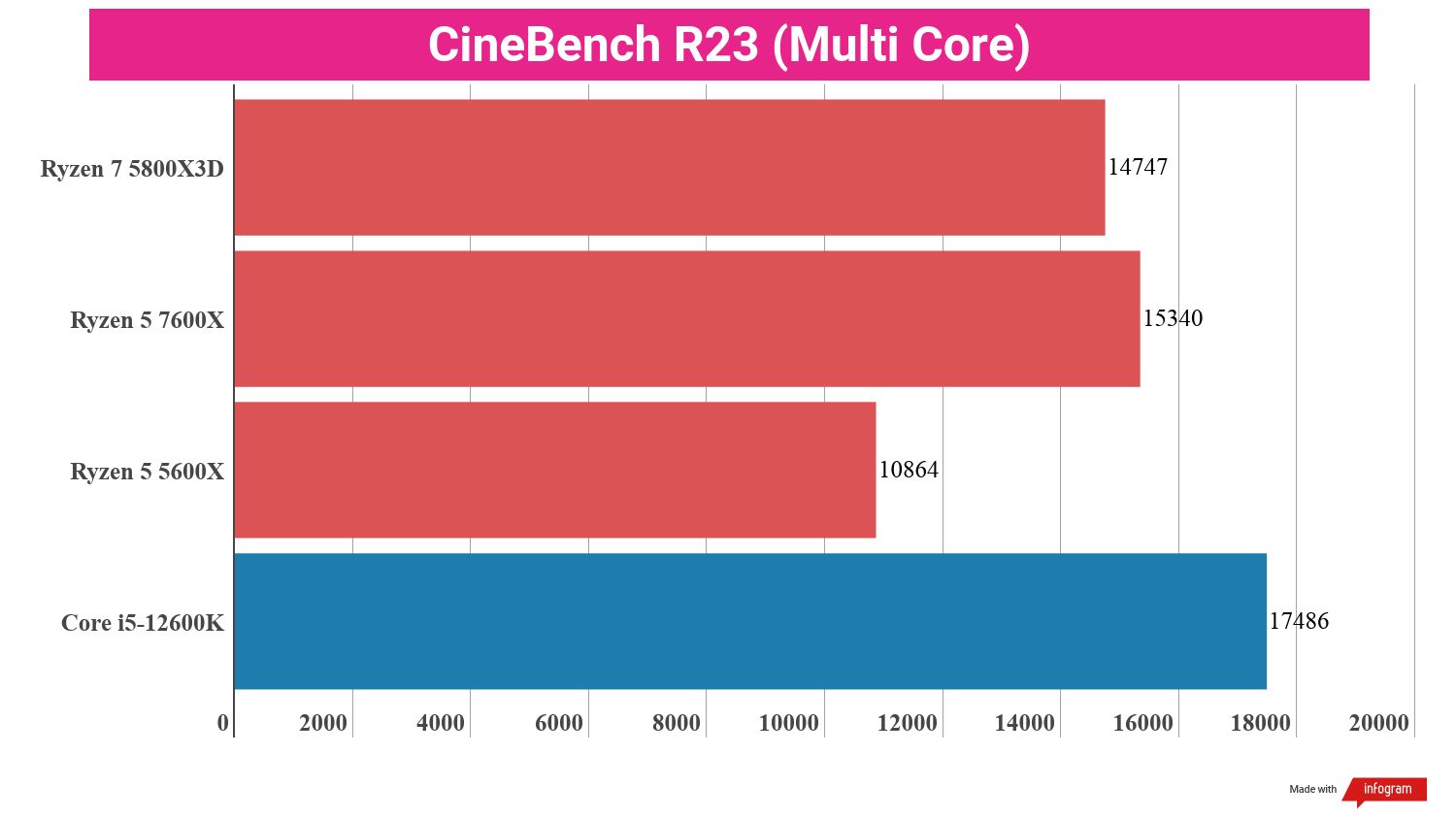
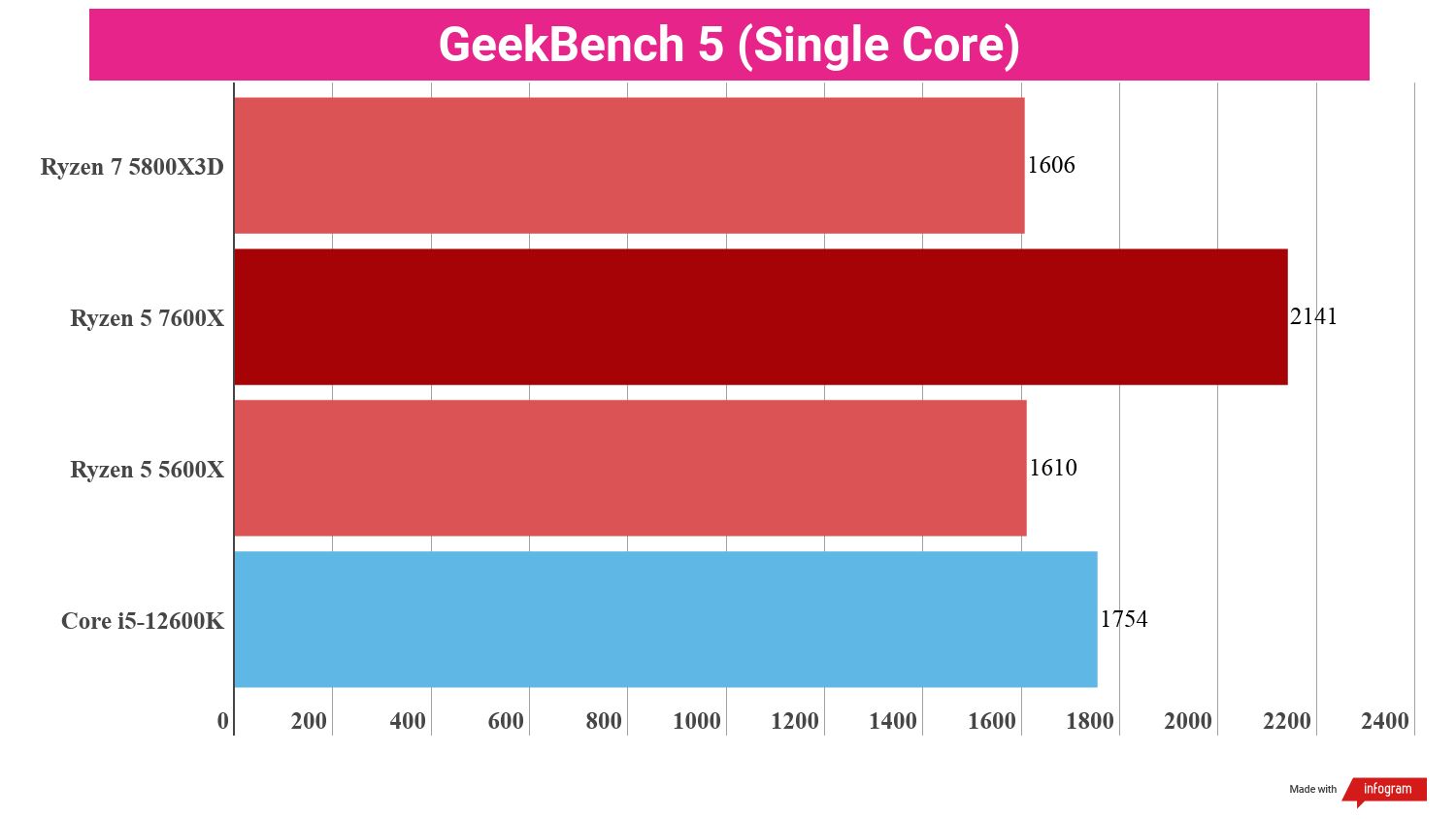
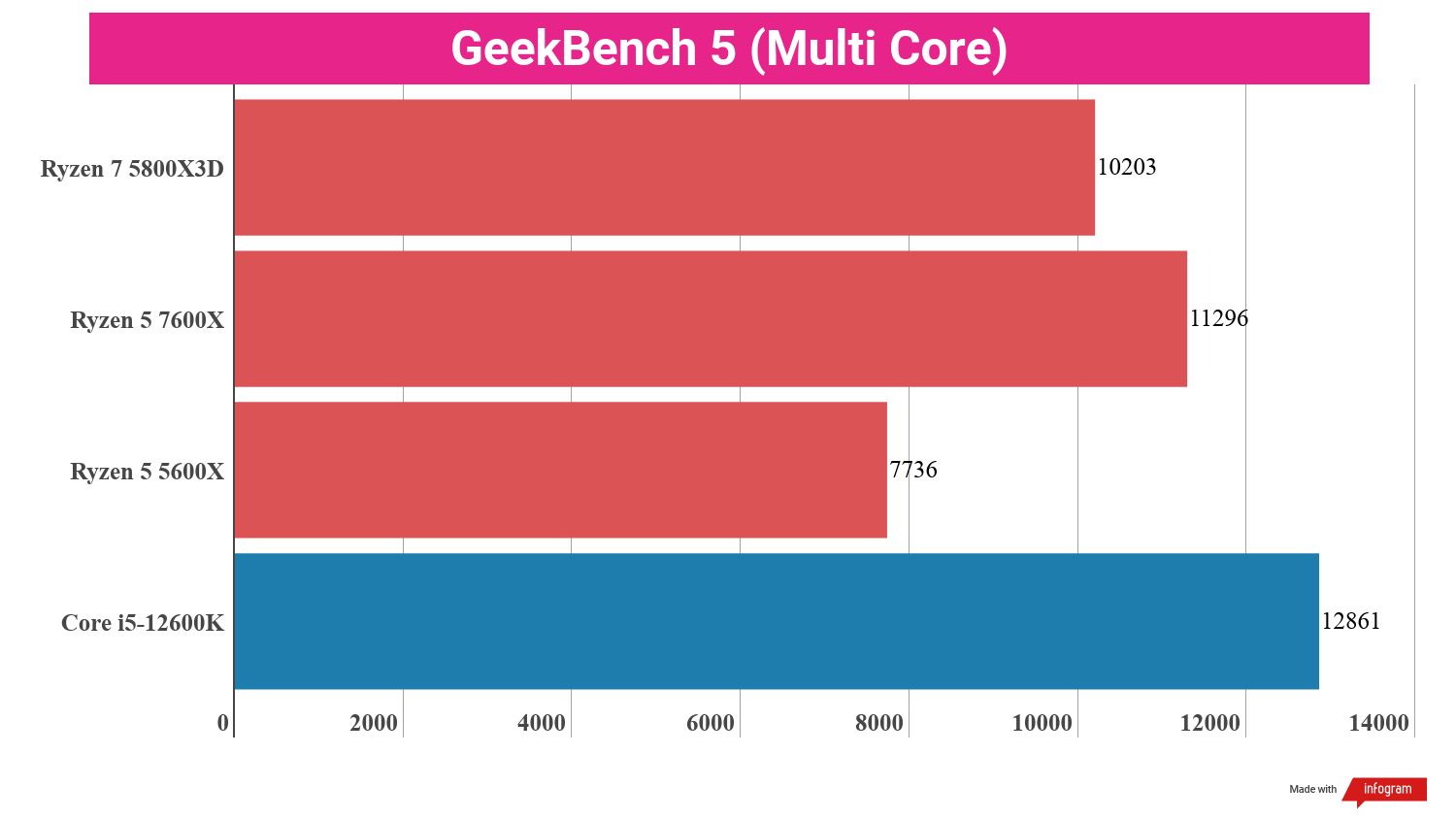
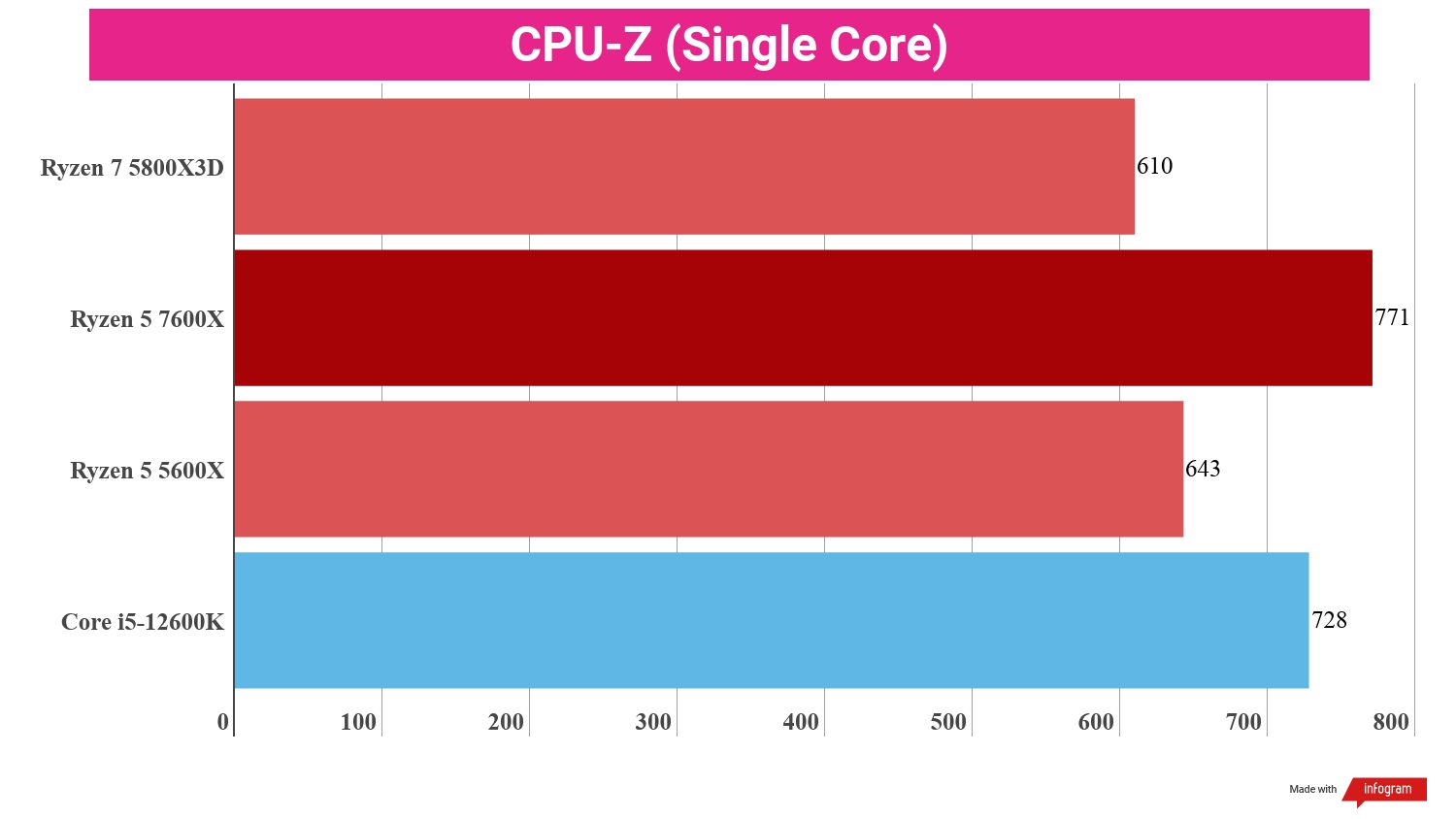
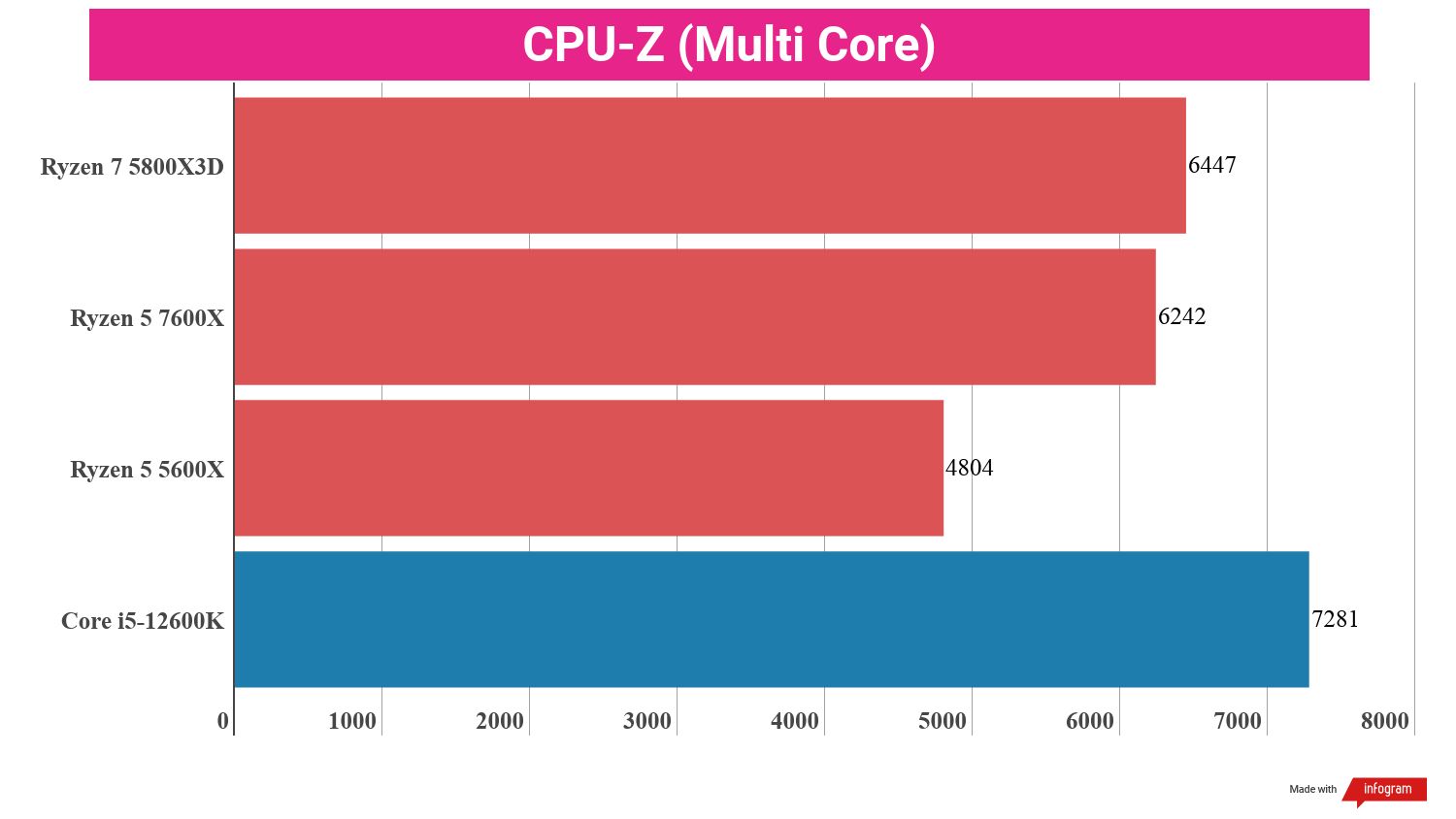
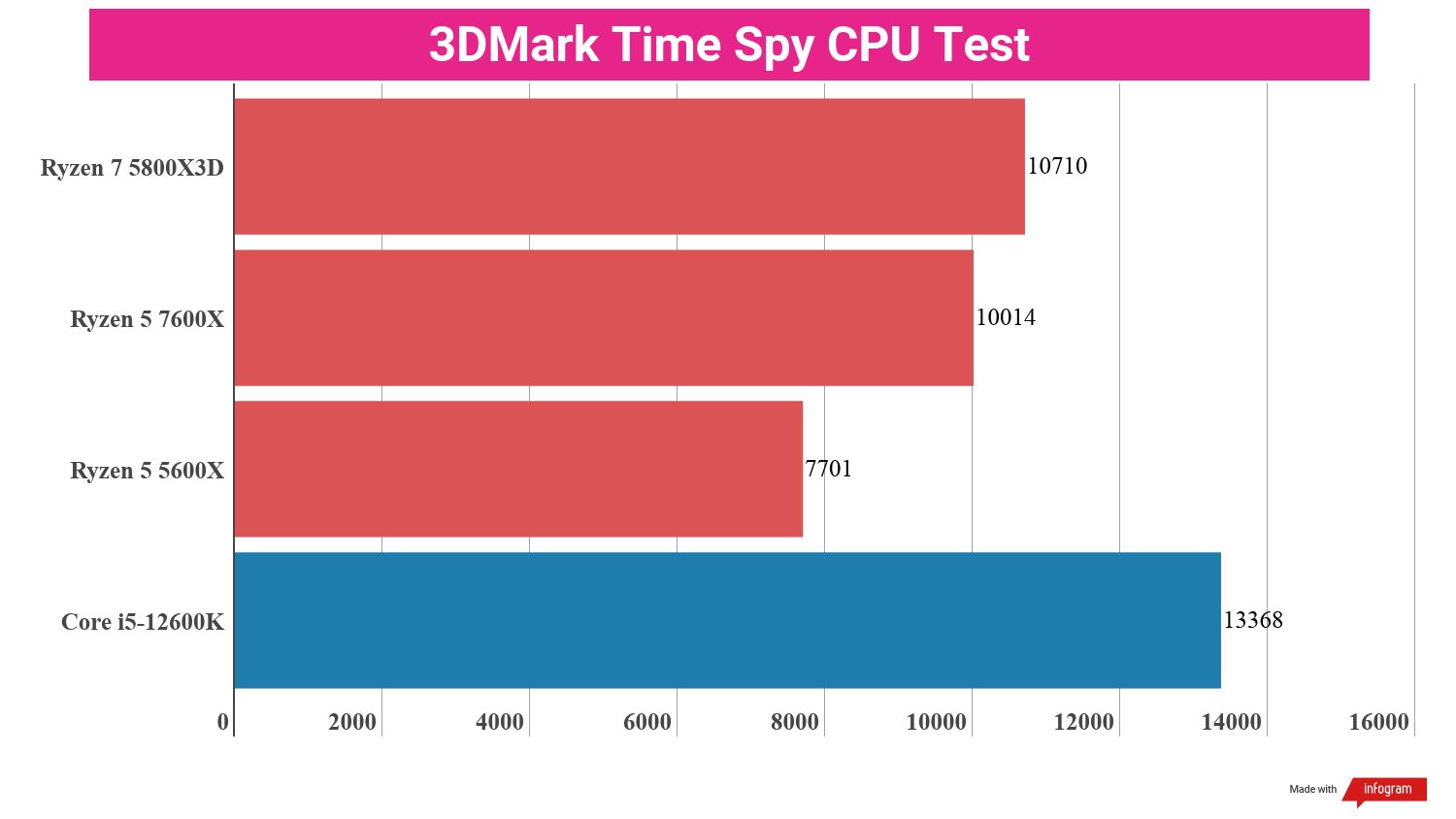
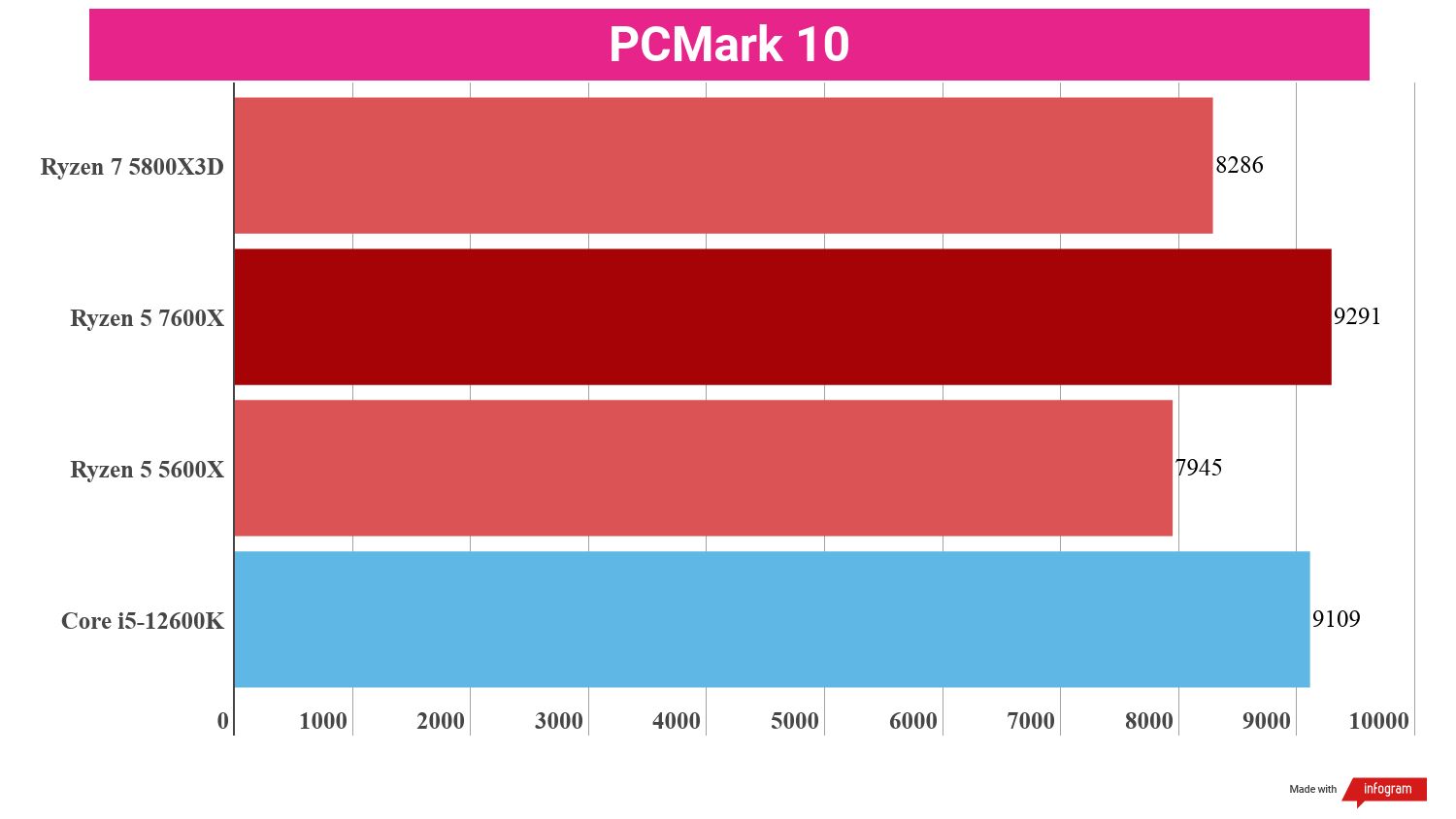
That increased power draw and thermal output is unsurprising when you look at the performance figures. With single-core scores of 1954 and 2141 in Cinebench R23 and Geekbench 5 respectively, the 7600X smokes its 12th-gen Intel equivalent and can even go toe-to-toe with the Core i9-12900K, a CPU that costs almost twice as much.
Those mighty cores also leave the 12900K in the dust when it comes to single-threaded gaming performance, performing incredibly well in Metro: Exodus, F1 2022, and Shadow of the Tomb Raider. Other games don’t fare quite as well, but it’s still an exceptionally strong showing with average gaming performance gains of more than 20% compared to the Ryzen 5600X.
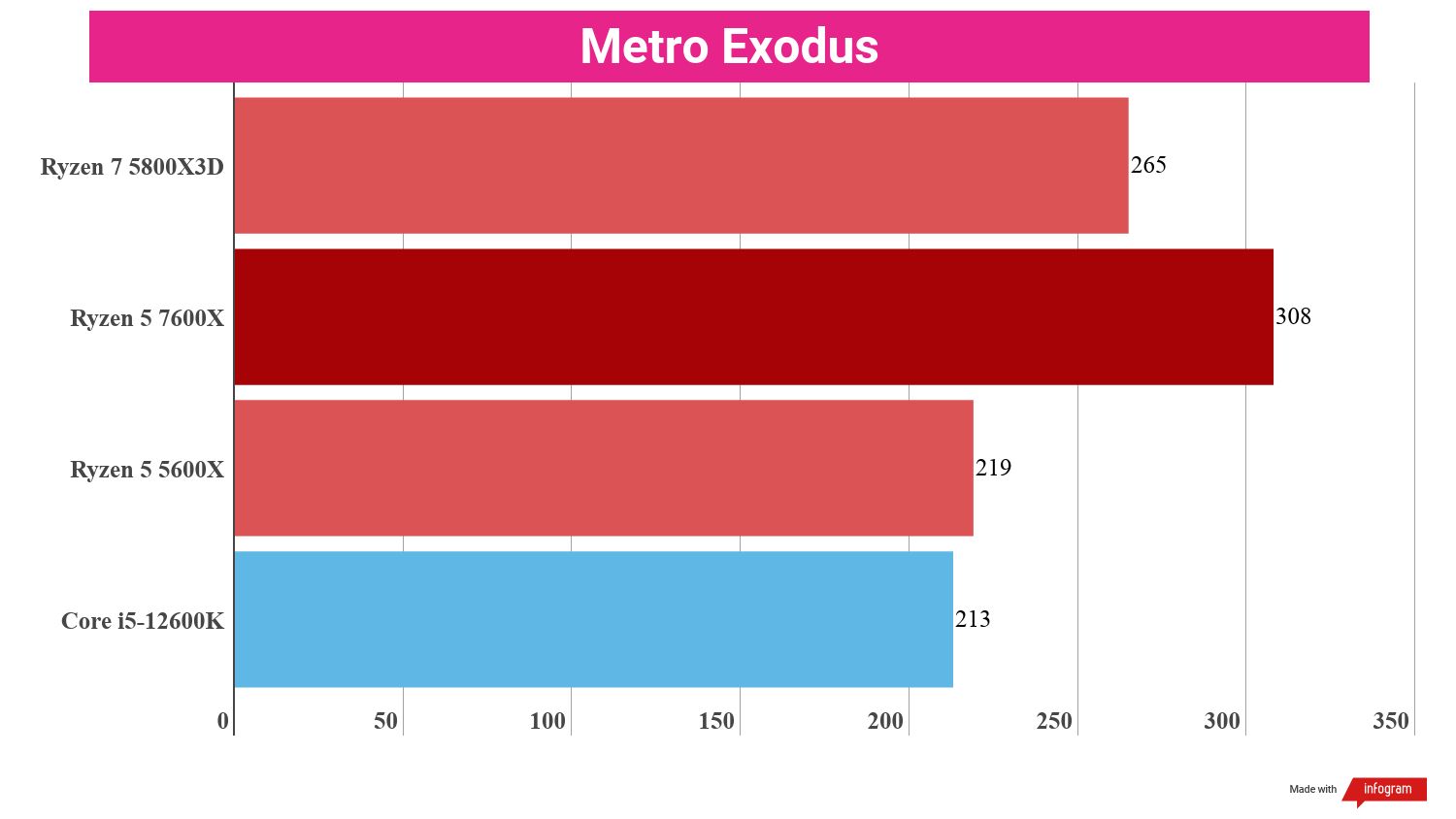
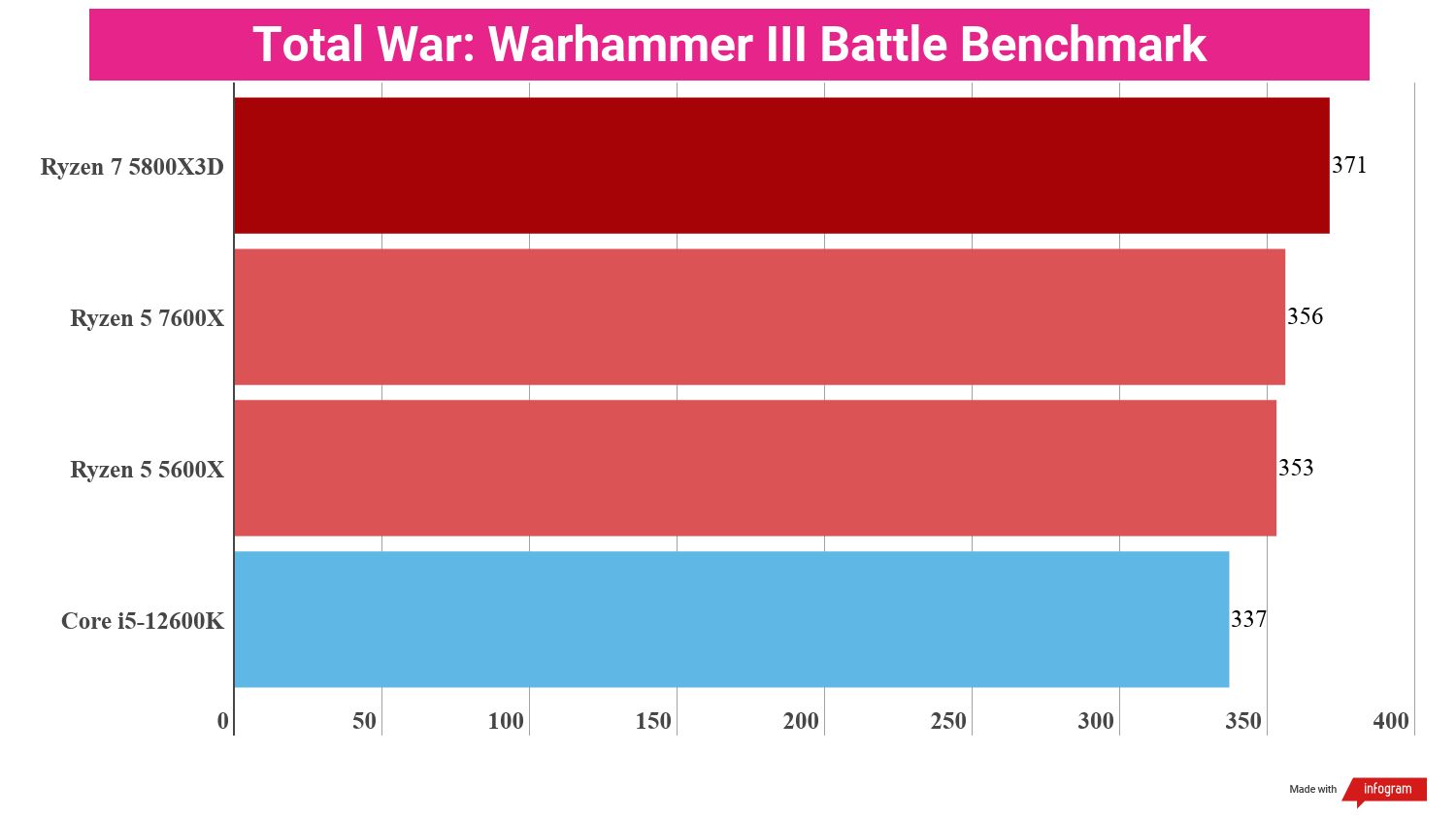
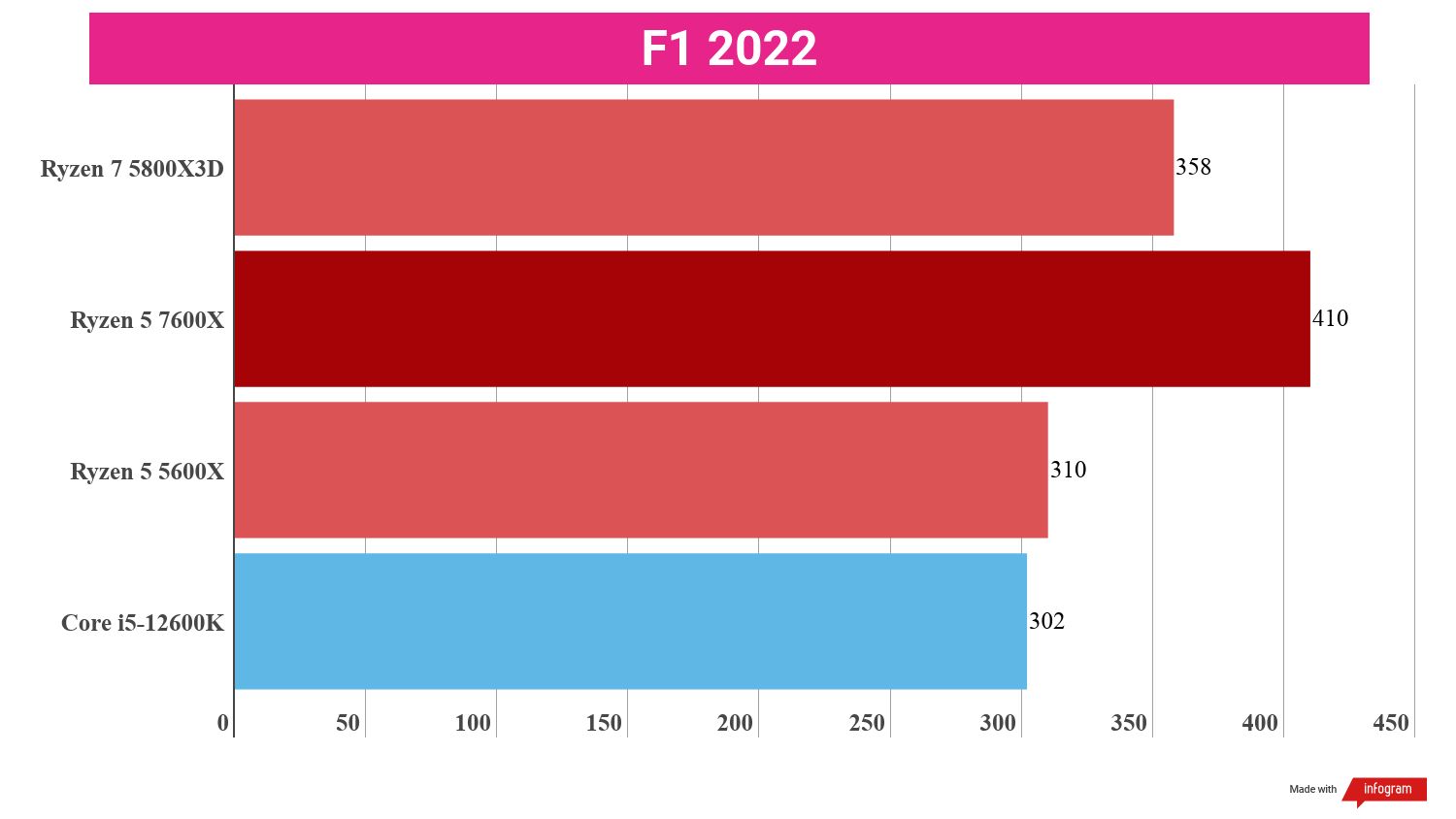
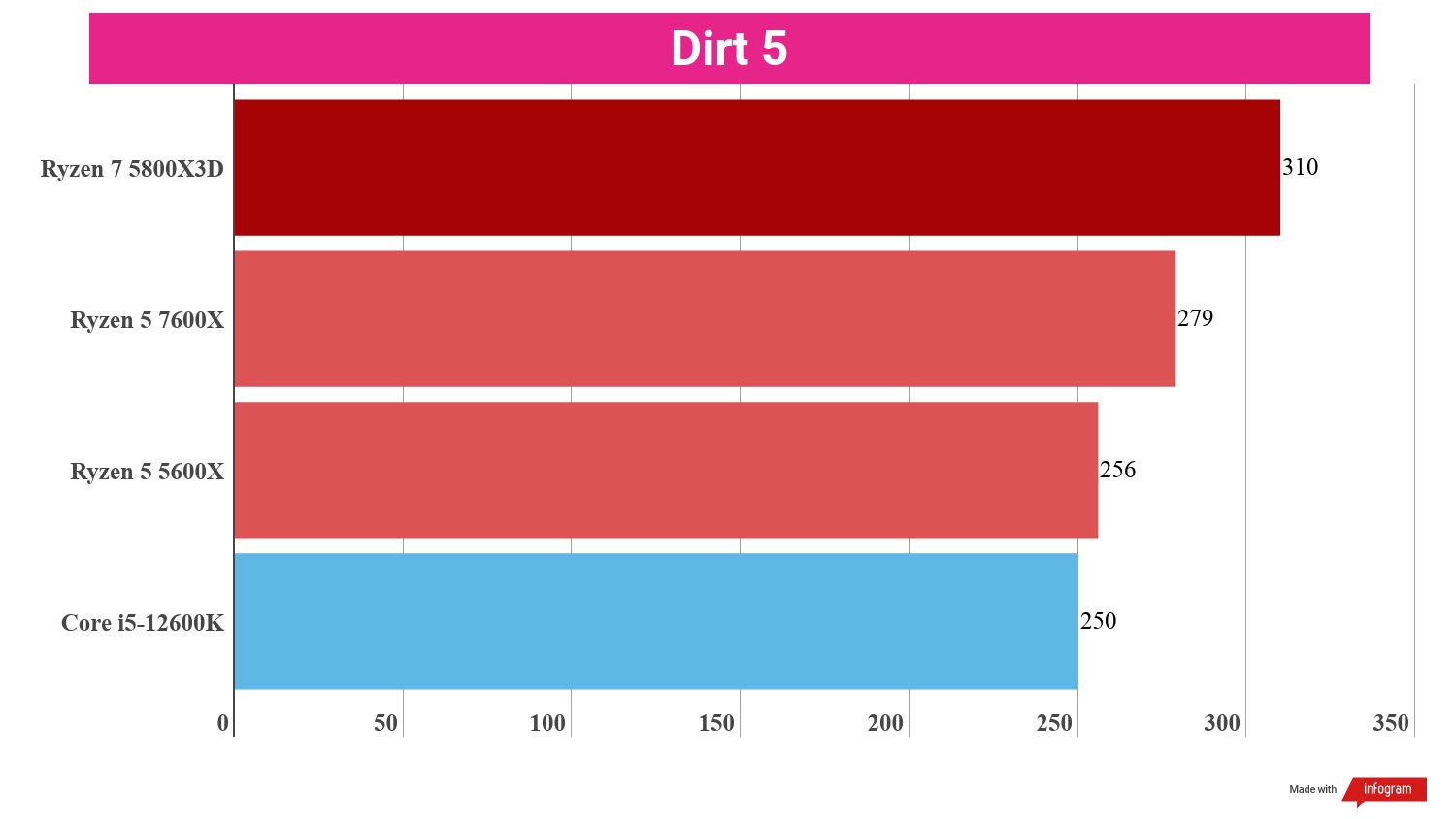
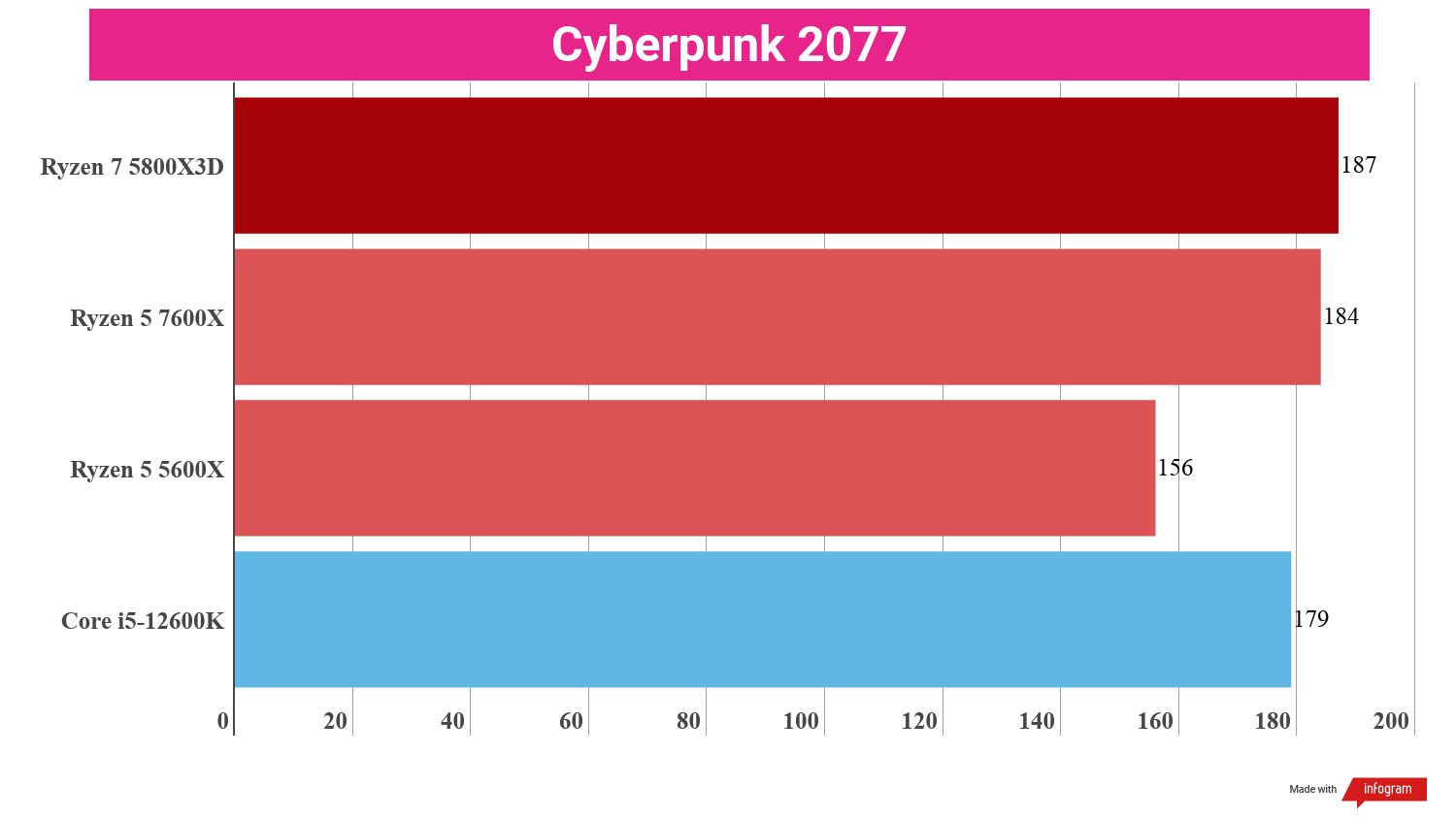
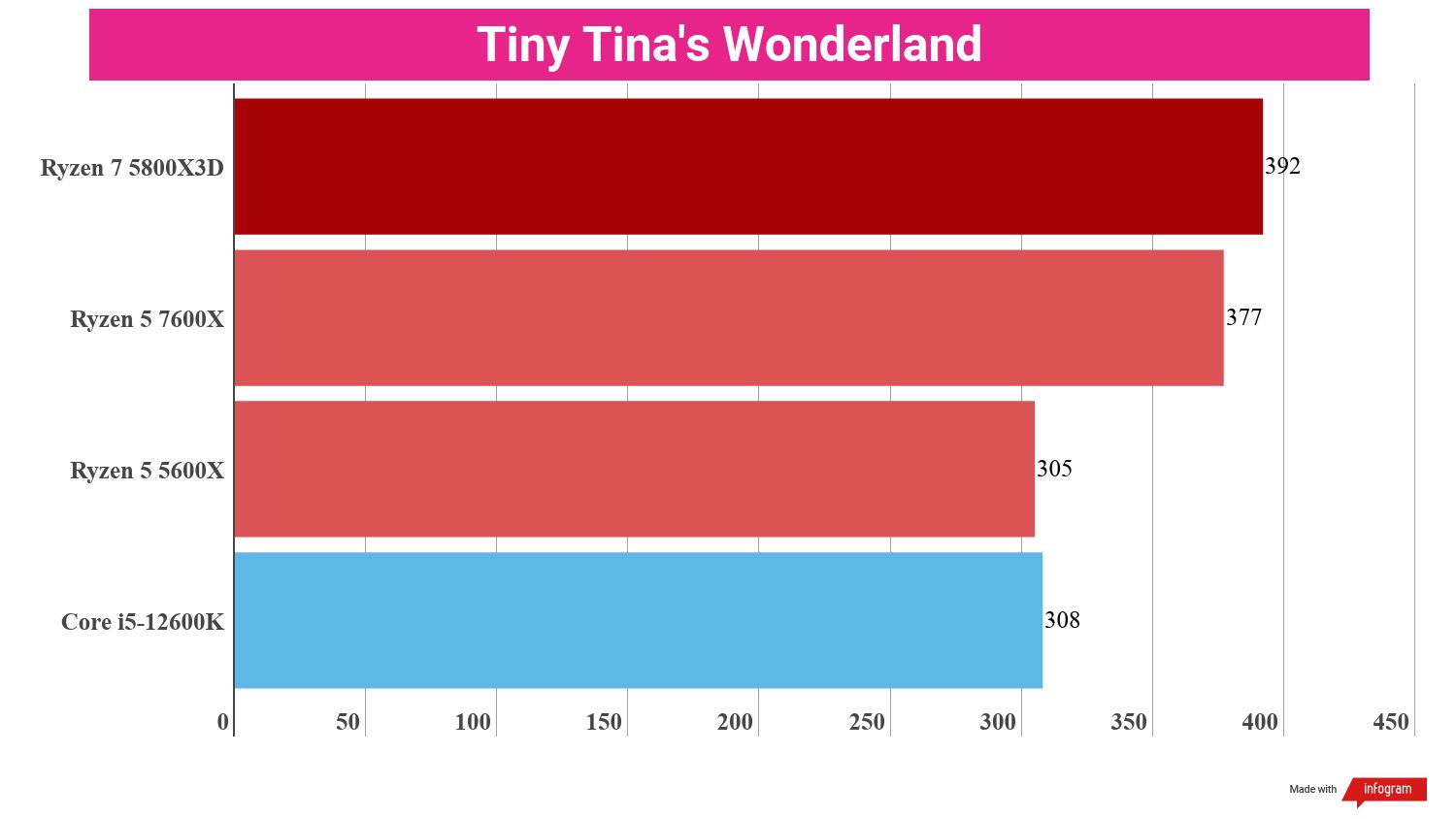
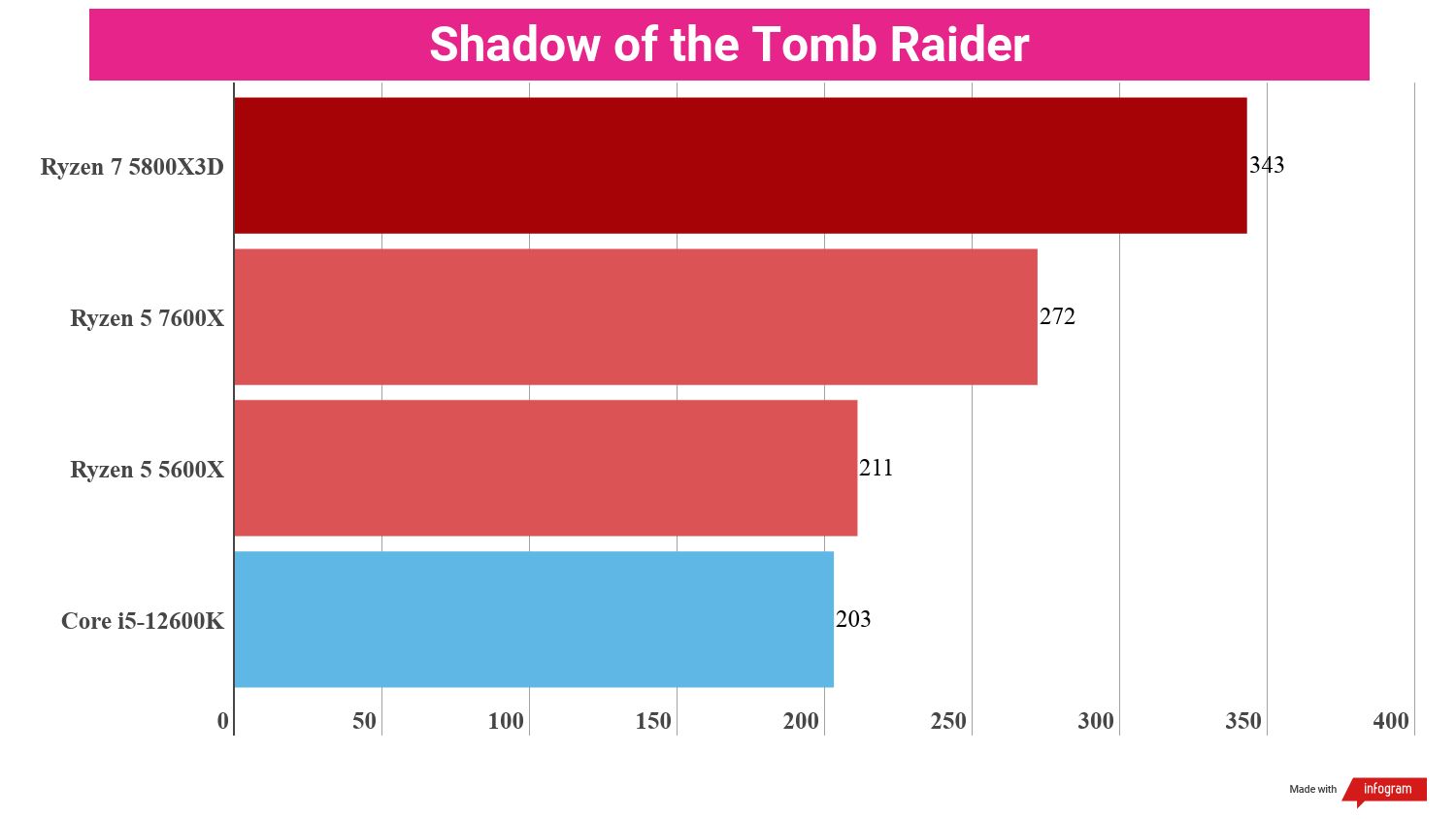
One area where the 7600X falls down a bit is in tasks like video encoding and rendering. Our Handbrake and Blender benchmarks gave similar results to those of the Core i5-12600K; certainly not a total disaster, but not great since Intel is prepping its 13th-gen chips. Rendering performance is decent, but this won’t be a CPU for professional creatives.
Performance in multi-core synthetic benchmarks also lost out slightly to Intel’s competing chips, but that’s somewhat unsurprising given the strength of Intel’s big.LITTLE architecture in multi-core workloads. Honestly, though? These drawbacks aren’t a problem. AMD is marketing the 7600X as a ‘processor built for intense gaming action’, a mission statement that it absolutely delivers on.
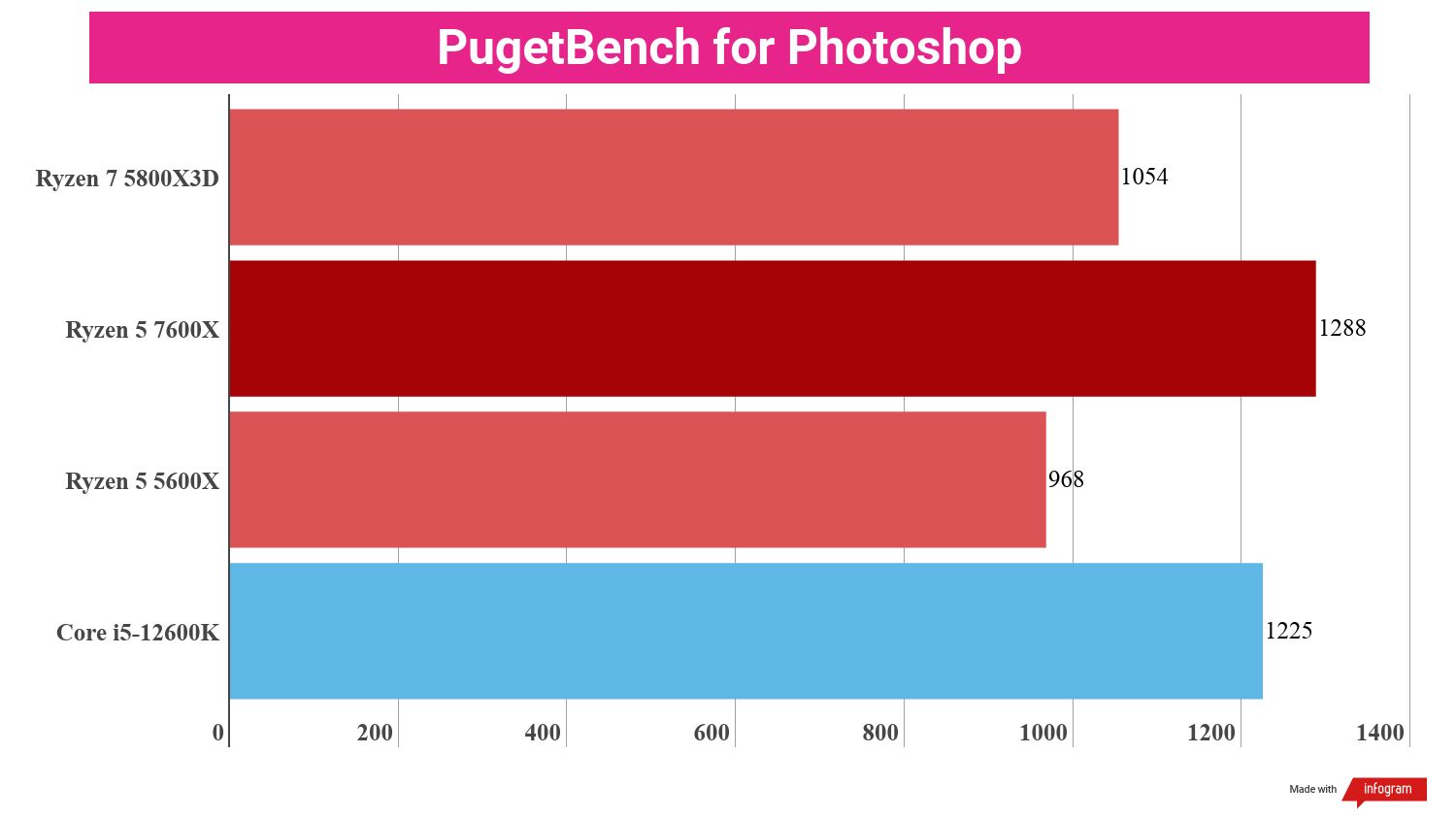
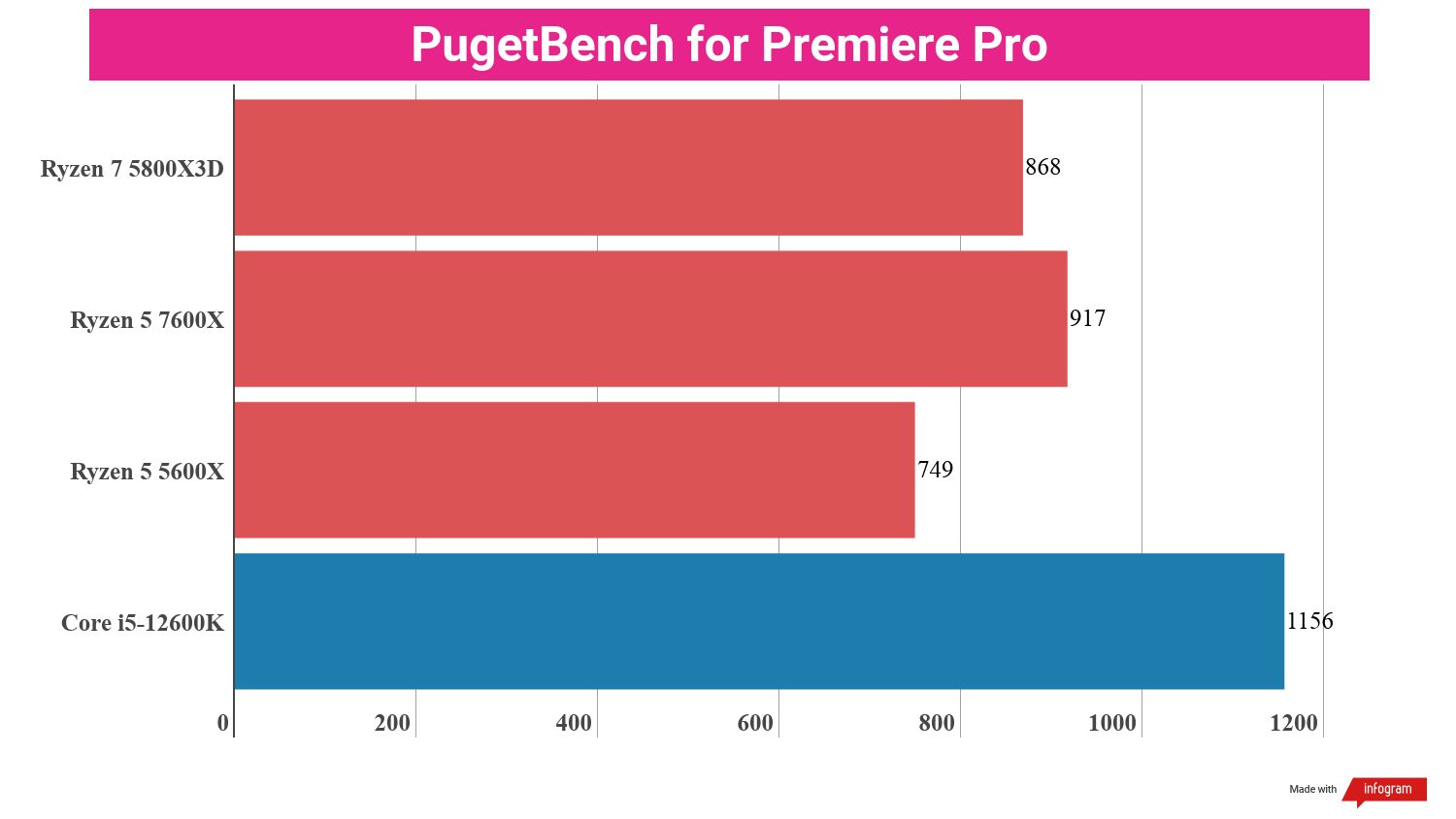
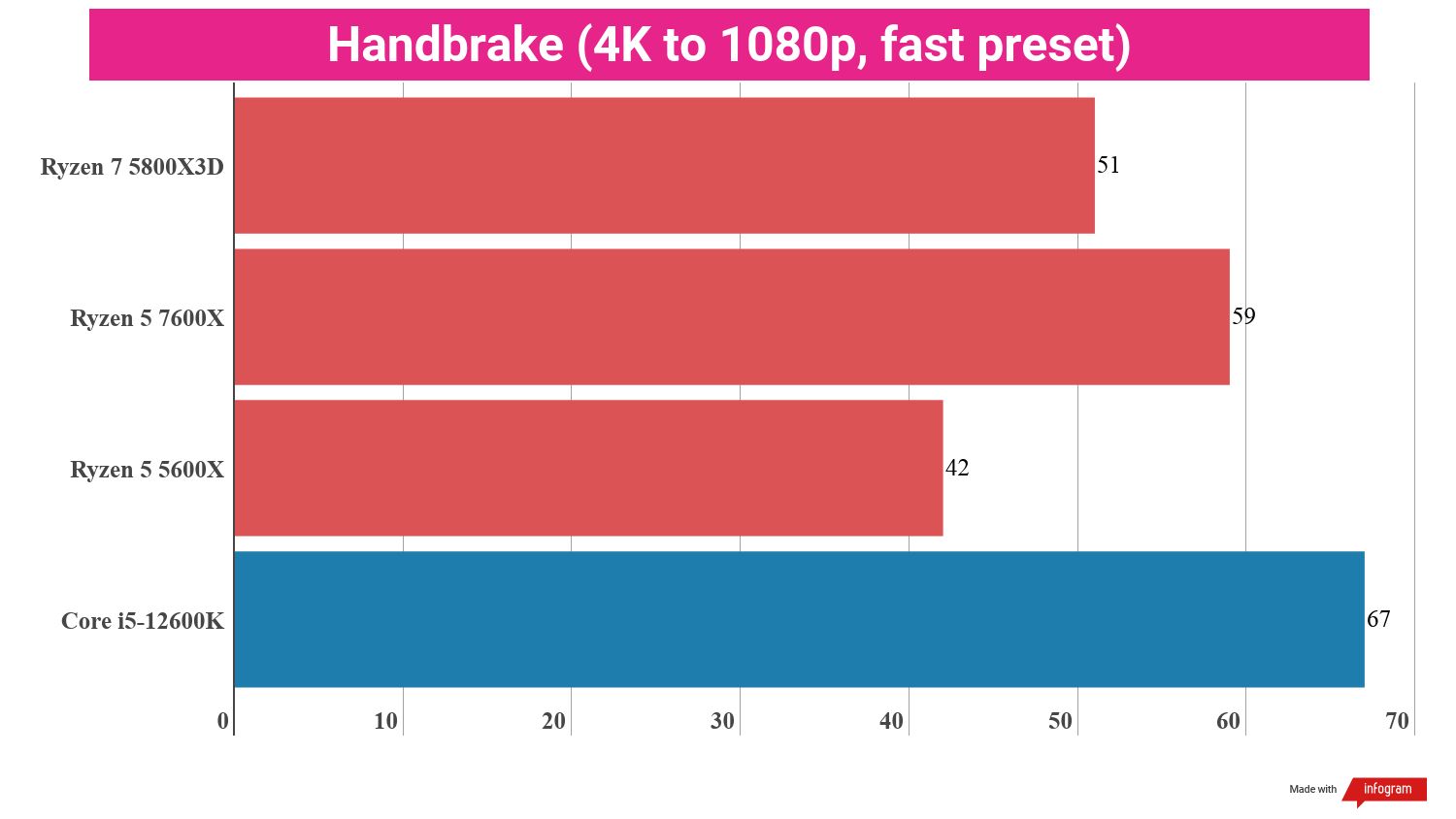
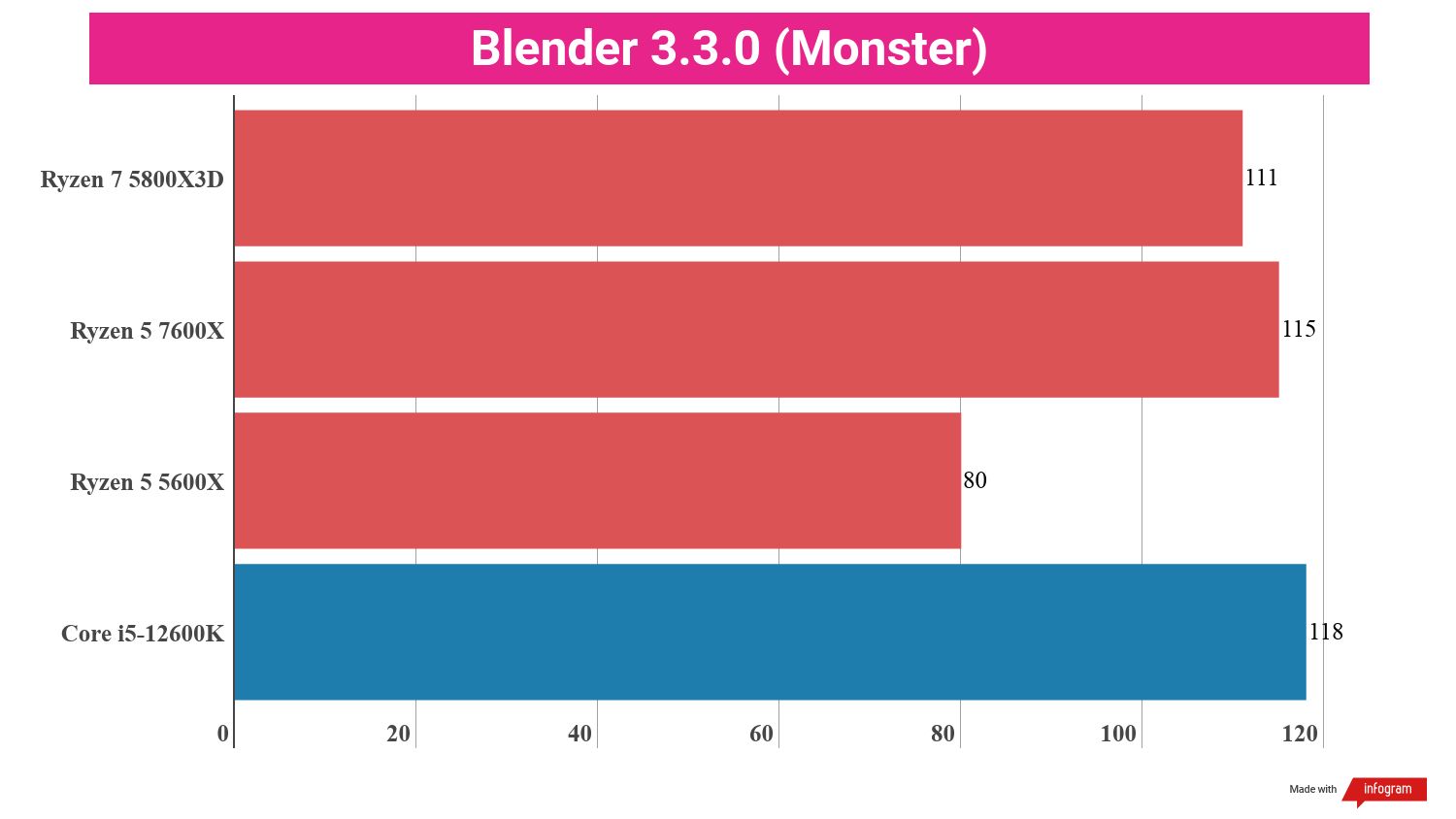
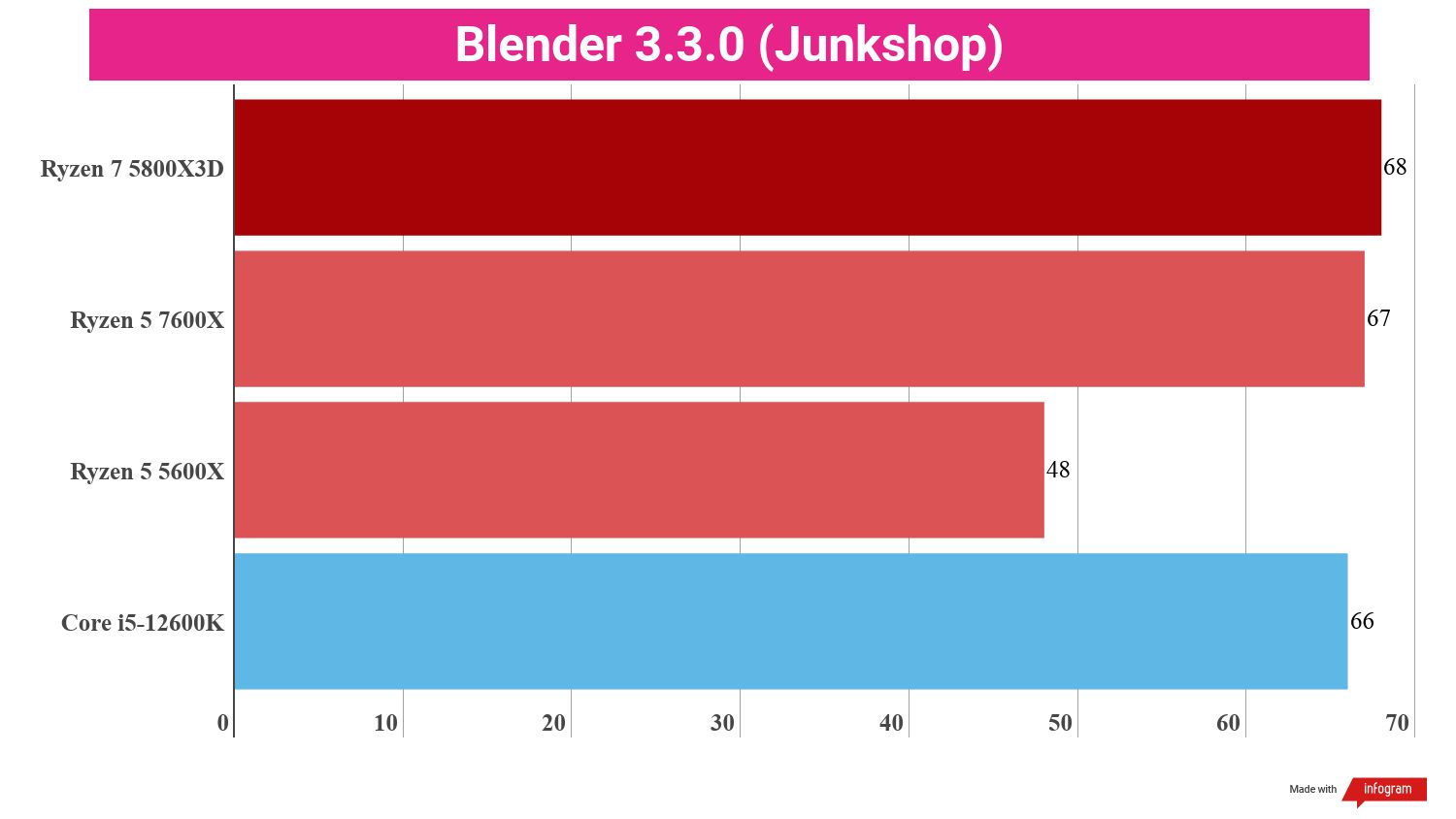
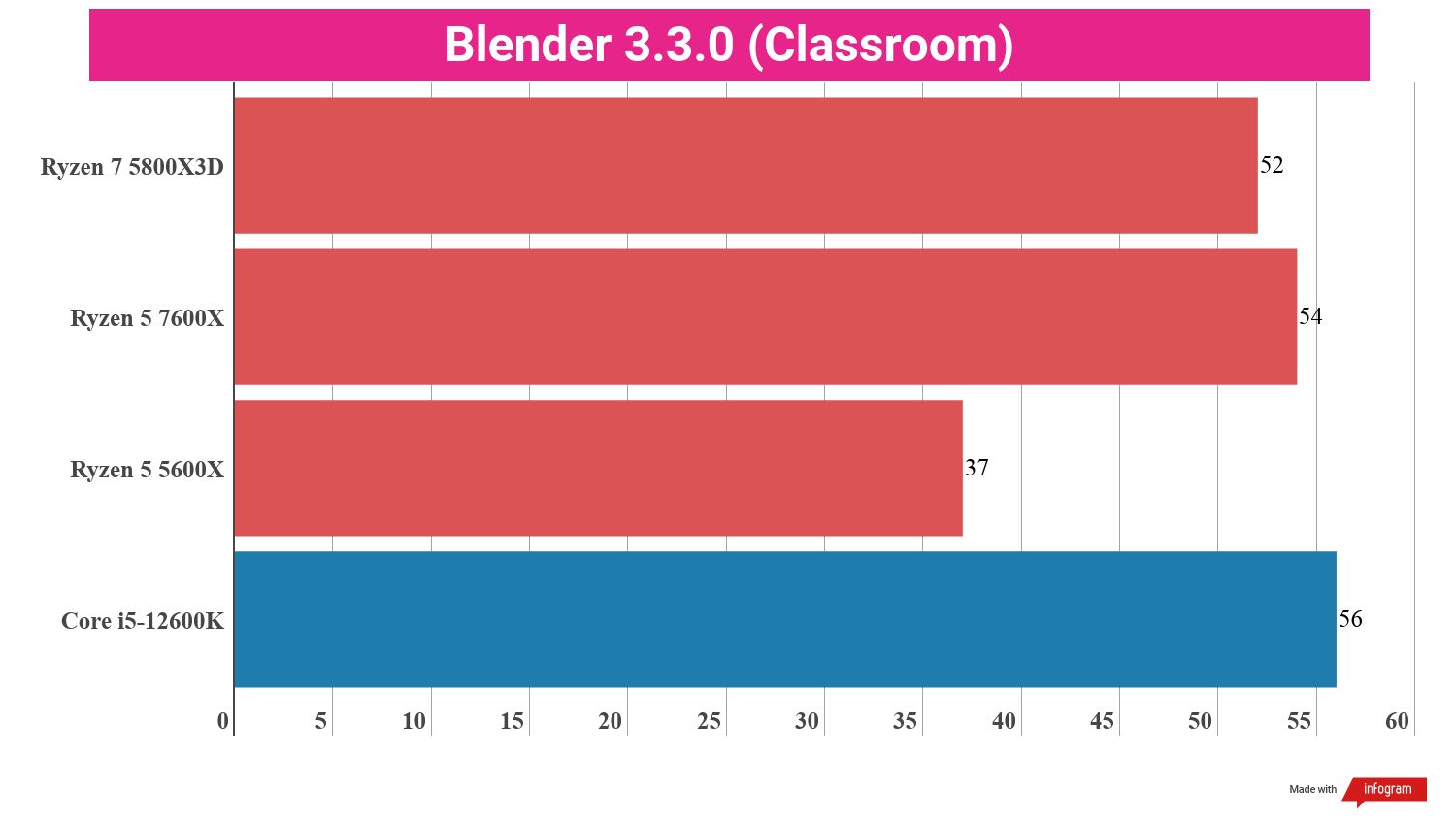
- Performance: 5 / 5
Should you buy the AMD Ryzen 5 7600X?
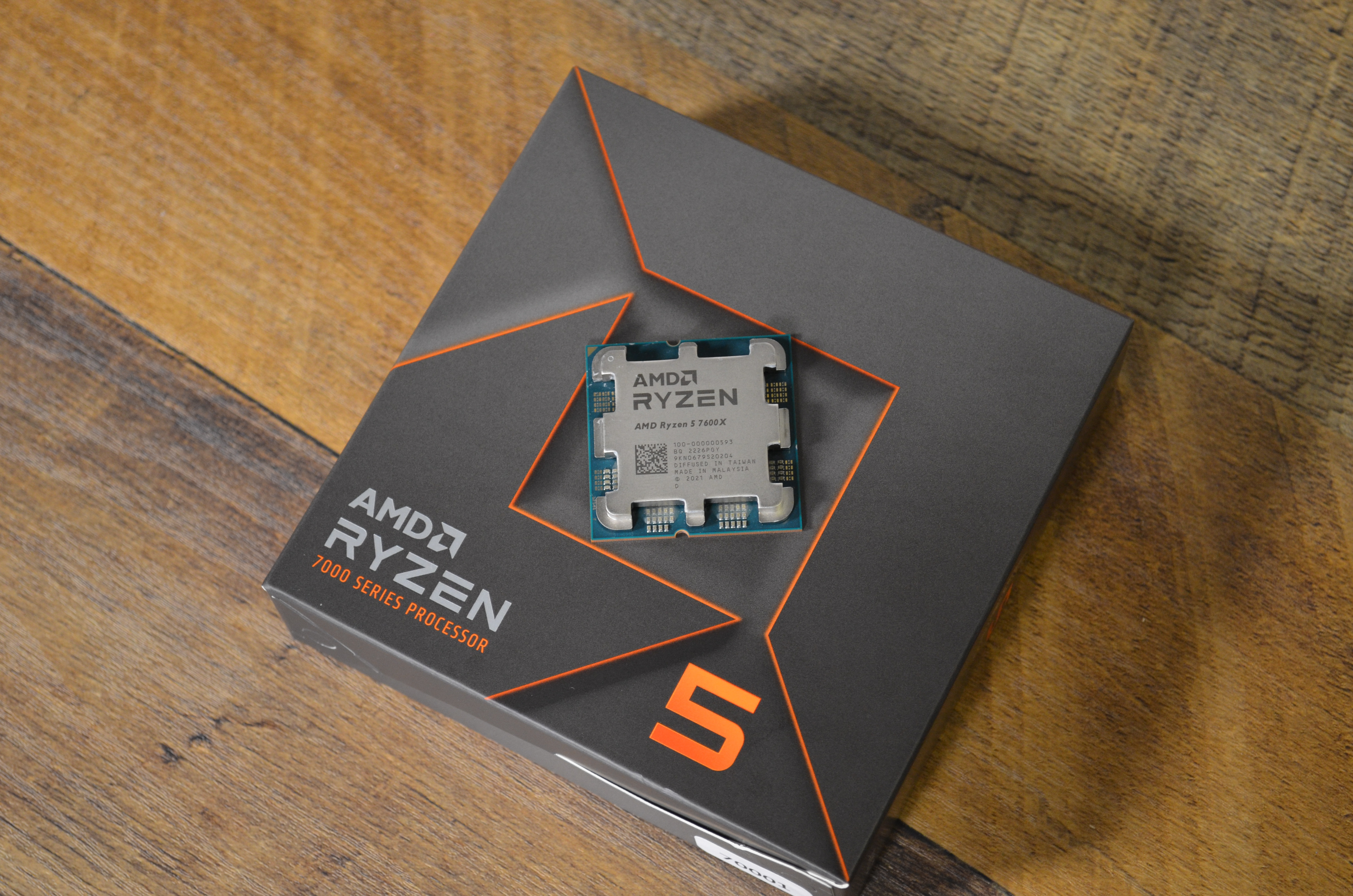
Buy it if...
Don't buy it if...
Also Consider
AMD Ryzen 5 7600X Final Report Card
| Value | The $299 price tag means there's no generational price increase, though upgrading to AM5 is costly. | 4 / 5 |
| Features | A generally fantastic suite of features and capabilities marred only by the lack of DDR4 support. | 5 / 5 |
| Performance | Absolutely stellar gaming performance and single-core scores. | 5 / 5 |
| Final score (average) | One of the best-value processors on the market right now: we love it. | 4.67 / 5 |
- First reviewed October 2022
How we test processors
When it comes to processors, we look at four key metrics: synthetic single and multi-core performance, "general" performance, creative performance, and gaming performance.
- Synthetic single and multi-core benchmarks test the performance of specific instruction sets and processor operations like floating-point calculations using benchmark tools like GeekBench, Cinebench, and CPU-Z.
- General performance is how the processor performs during typical use conditions using PCMark 10.
- Creative performance is a measure of how well the processor performs in several popular creative workloads like Handbrake, Blender, and Adobe Photoshop. Where possible, we explicitly disable GPU accelerated operations or test rendering using the CPU by itself.
- Gaming performance measures how well the processor calculates gaming operations like in-game physics by running several games' integrated benchmark tools like CyberPunk 2077, Metro: Exodus, and F1 2022. In all cases, we run the benchmarks on the lowest graphics settings available at 1080p and using the most powerful graphics card we have available and with 32GB RAM to isolate the actual CPU operations we are testing without having to worry about inteference with excessive memory or graphics management.
Once this is done, we average the scores across each category for a final report card broken down by use case, and then we finally divide these scores by the processor's MSRP to measure its performance-for-price to determine how good of a overall value the processor is for the average consumer.
0 comments:
Post a Comment